
Award-winning actor Marianne Jean-Baptiste
Page 11

BRILLIANT BRYNLEY
A local photographer’s Peckham project
Page 12

RYE LOOK
Diving into the River Peck’s past Page 17


Award-winning actor Marianne Jean-Baptiste
Page 11

A local photographer’s Peckham project
Page 12

RYE LOOK
Diving into the River Peck’s past Page 17
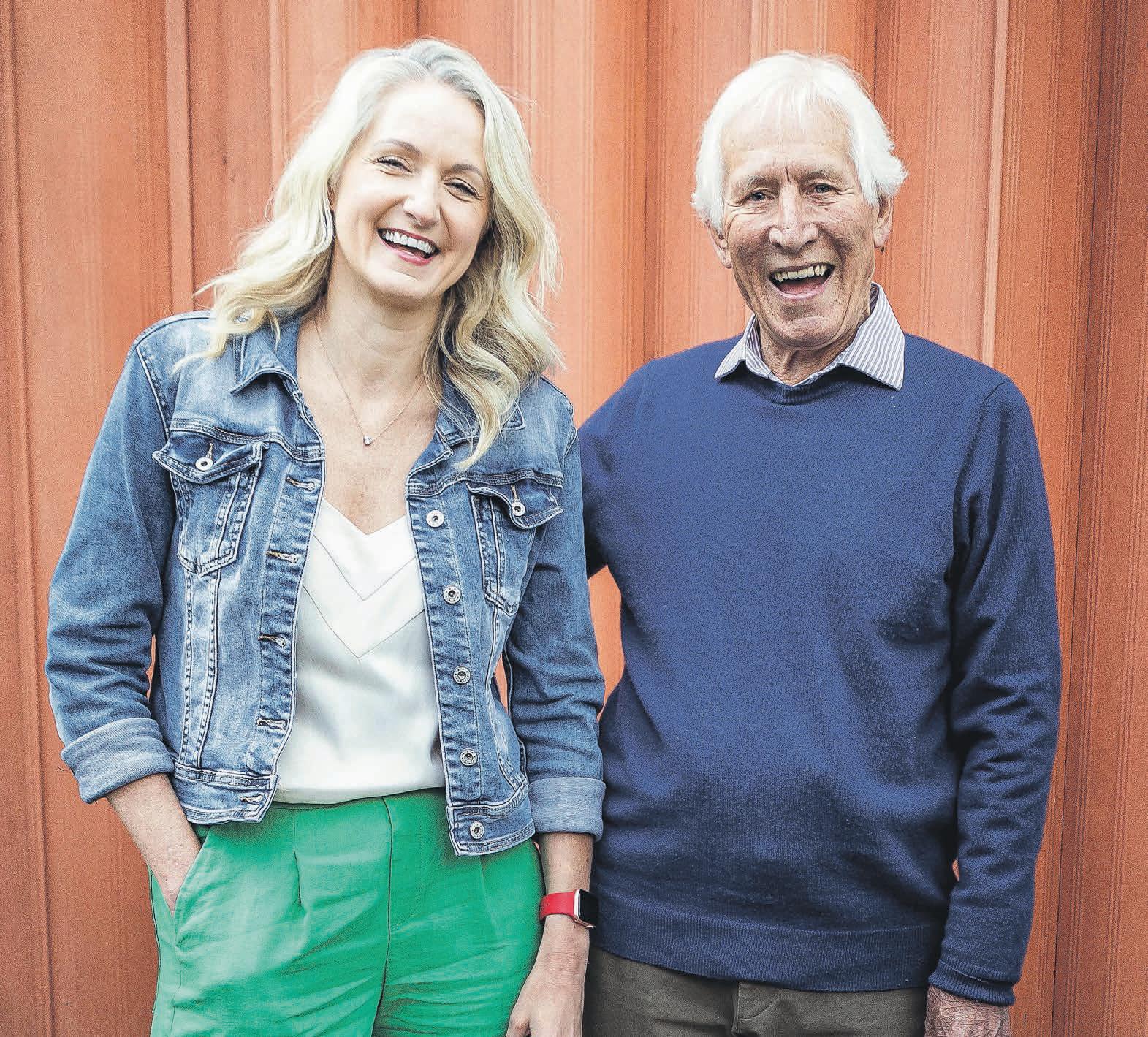

The Peckham Peculiar has now been in print for 11 years.
During that time, we’ve featured hundreds of local people and businesses on our pages, and this issue is no exception.
Included in this edition are the people behind the UK’s oldest service lift manufacturer, George Johnson Lifts. The business is situated in a railway arch off Bellenden Road.
The managing director Ian’s great-greatgreat grandfather’s uncle was the original

Theo Kotz and his partner, Rebekah, were a young couple living life to the full in Peckham when blood cancer stopped them in their tracks. Theo, 33, has been diagnosed with leukaemia – and urgently needs a stem cell transplant. But there is no compatible match for him on the stem cell donor register, which very few people know about.
With time running out and Theo being cared for in hospital, he and Rebekah have teamed up with the blood cancer charity DKMS to help save patients like Theo. Rebekah has helped launch an urgent online appeal, encouraging more people to undertake the quick and easy process of signing up as potential stem cell donors.
George Johnson and he started the business in about 1850. Read the full story on page eight.
Also featured is Marianne Jean-Baptiste.
Our writer Luke G Williams profiles the Peckham-raised actor, who is making headlines for her performance in Hard Truths, Mike Leigh’s latest cinematic triumph. Turn to page 11 to read it.
The writer Susan Allott dives into the fascinating history of the River Peck on page
17, and our centre pages feature a brilliant photo essay by the local photographer Brynley Davies. Brynley is starting a project to document Peckham over the next year – capturing its people, businesses and community.
He will be walking the streets of SE15 with his camera and offering free photos in exchange for the chance to document local life. To contact Brynley, visit brynleyodudavies.com.
The next issue of the Peckham Peculiar will be published in April and as always, it will be
distributed to all our stockists across Peckham, Nunhead and the surrounding area. If you run a business or organisation and are interested in advertising in the paper, please drop us a line at peckhampeculiar@gmail.com to find out how we can promote what you do across Peckham, Nunhead, south-east London and beyond, in print and online.
We hope you enjoy the issue!
Mark McGinlay and Kate White
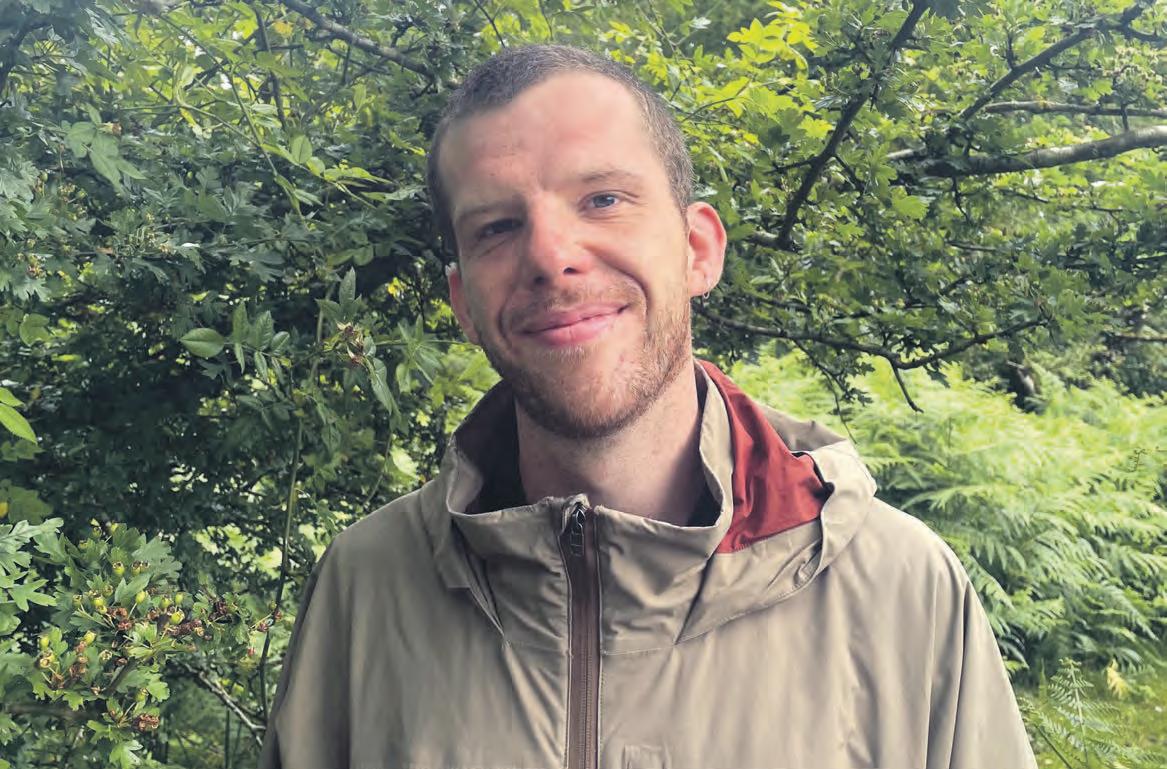
“We are on a mission to get Theo matched,” Rebekah said. “We know he must have matches out there, we just need to find them. We want to sign up as many people as is humanly possible to become registered stem cell donors – not only for Theo’s sake, but for every person affected by blood cancer. Every single registration might just save someone’s life and give a family like ours a reason to hope.”
Theo, a film-maker and writer, is always the first person on the dance floor. He loves Guinness, the woods, writing, the sea, his mum’s dogs, raving, running, dance music, folklore, documentaries, telling funny stories and, more than anything, his friends, family and Rebekah.
He was admitted to hospital after three months of increasing tiredness and shortness of breath. He had also developed a large lump on his neck, and the haematology team quickly diagnosed acute myeloid leukaemia, an aggressive form of blood cancer.
“It’s so easy to sign up as a stem cell donor and the donation process itself can be just like giving blood – it’s a no-brainer,” said Rebekah. “A selfless act that takes little effort and could give someone their life back.”
Registering as a stem cell donor is a quick and easy process involving a simple mouth swab, offering hope to blood cancer patients who are still urgently in need of a compatible stem cell match.
Editors Mark McGinlay, Kate White | Production Tammy Kerr | Photographer Julia Hawkins
Subeditor Jack Aston | Features editor Luke G Williams Marketing and social media Mark McGinlay
For editorial and advertising enquiries, please email peckhampeculiar@gmail.com peckhampeculiar.tumblr.com | @peckhampeculiar | @peckhampeculiar | @peckhampeculiar

If you are aged between 17 and 55 and are in general good health, you’re eligible to join the register with DKMS.
Deborah Hyde, a spokesperson for DKMS, said: “If you are found to be a match for someone needing a transplant, then in nine out of 10 cases, donating your stem cells is a simple process similar to giving blood.
“Every 20 minutes, someone in the United Kingdom is diagnosed with blood cancer, so you could be giving someone like Theo a second chance at life.”
You can request a swab kit online at dkms.org.uk/theo
Dulwich Hamlet FC have appointed the highly experienced Bradley Quinton as their new manager, in a deal that runs until the end of the season.
Speaking to the Peckham Peculiar, Quinton, 46, said he was delighted to have joined such a “huge club with a great fanbase”.
“I’ve come up against Dulwich Hamlet before as a manager and a player,” he said. “I know where they are at this moment in time and where they should be. The club haven’t been doing themselves justice, so we need to work a lot harder and then I’m sure we’ll move in the right direction.”
At the time of writing, Dulwich were 18th in the Isthmian League Premier Division, just two points ahead of the relegation zone. However, Quinton is confident that the side will soon be on the up once again. “The main thing you need in football whatever level you play at is confidence and work rate,” he said.
“I’ve worked hard so far in getting the players to understand where we should be with and without the ball. I want them to have the confidence to go out and express themselves and play with a smile on their faces. We had a fantastic [training] session last night. In training the boys have been thriving and buying into it. Every session the intensity has been superb.”
Dulwich have been battling an injury crisis this season, and Quinton said reinforcing the squad was a possibility in the coming weeks.
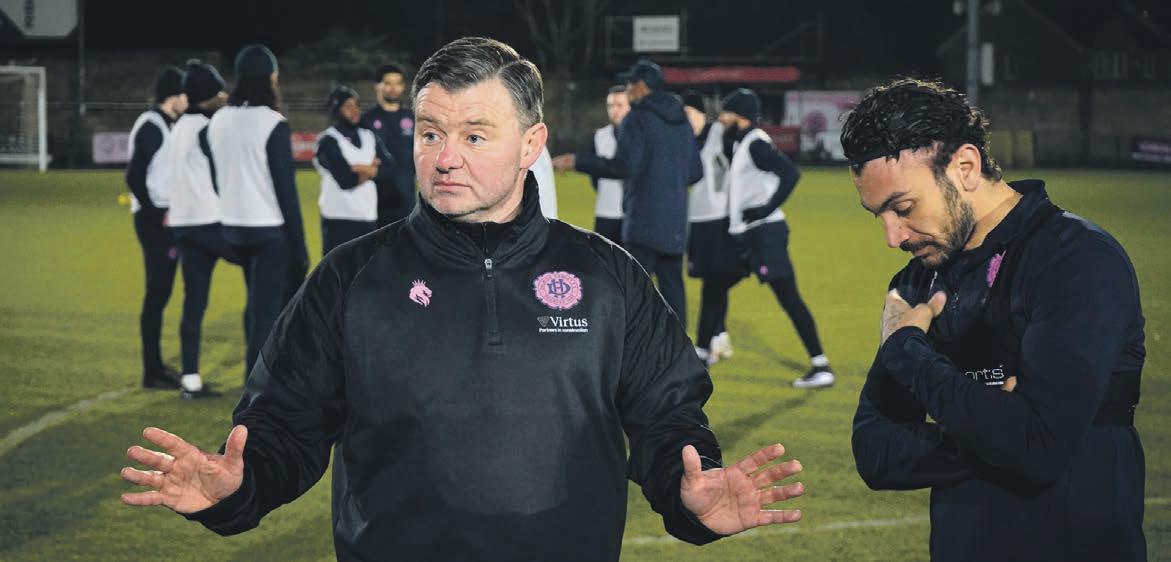
“We’re discussing this with the board and the chairman,” he said. “There are possible movements, things we may be able to do. Yes, we’ve got a few injuries but we can only wait and see what happens. In another two or three weeks hopefully some of the injured players will be available again for selection.
“In the meantime, the lads understand that everyone will be given a fair crack of the whip and the chance to show they want to play – not just for me but for the club and the fans.
“If we need to strengthen the squad we will do. There are some fantastic players and good
youngsters at the club. Given our position in the league it’s important we stick to the game plan and stick together.”
After being on Tottenham’s books as a schoolboy, Quinton played for teams including Braintree and Enfield. He also went on to manage both these clubs, leading Enfield to the playoffs and Braintree to promotion in 2018.
Quinton is the third person to take charge of Dulwich since Gavin Rose left the club after 13 years in September 2022. Paul Barnes initially took over the managerial hot-seat, with Hakan Hayrettin succeeding Barnes in March 2023.
Dulwich were relegated from the National League South that year, and finished 12th in the Isthmian League Premier Division in 2023-24. However, Hayrettin was sacked in January after a poor run of form in which Dulwich plummeted towards the relegation zone.
The Dulwich Hamlet chairman, Ben Clasper, said: “Bradley has what we believe it will take to come into a challenging situation, from his experience in this division to his time working within a fan-owned club, and we were further encouraged by the feedback from those who have worked and played for him.”

Two local authors have become Goldsmiths honorary fellows.
Evie Wyld and Caleb Azumah Nelson, who both hail from south-east London, joined the Bollywood actor Kalki Koechlin to receive their awards in a degree ceremony at the university in New Cross.
Wyld, who lives in Peckham, is the author of five critically acclaimed novels. A recipient of the Miles Franklin award, the Stella prize and the Encore award, in 2013 she was named on Granta’s Best of Young British Novelists list. She is a fellow of the Royal Society of Literature.
Azumah Nelson’s debut novel, Open Water, published by Penguin in 2021, helped establish him as a compelling voice in contemporary literature. After receiving widespread acclaim, the

book won the Costa first novel award and the British book awards’ debut fiction book of the year. Azumah Nelson’s work highlights the richness of south-east London’s communities and culture, celebrating underrepresented voices.
Koechlin, an actor and writer, graduated from Goldsmiths before embarking on a career in theatre and film. Her debut film role in Dev D earned her a Filmfare award for best supporting actress.
She has since starred in other critically acclaimed films including Margarita with a Straw and Gully Boy. On the stage her writing and performances have won accolades including the Hindu’s MetroPlus playwright award.
Koechlin was also named a Chevalier de l’Ordre des Arts et des Lettres in the 2018 French honours for her contribution to the arts.
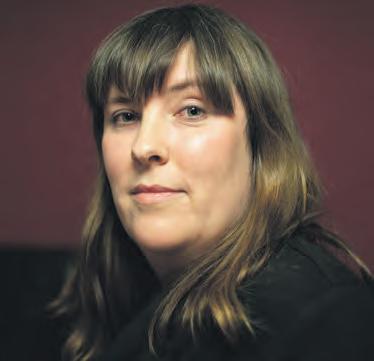



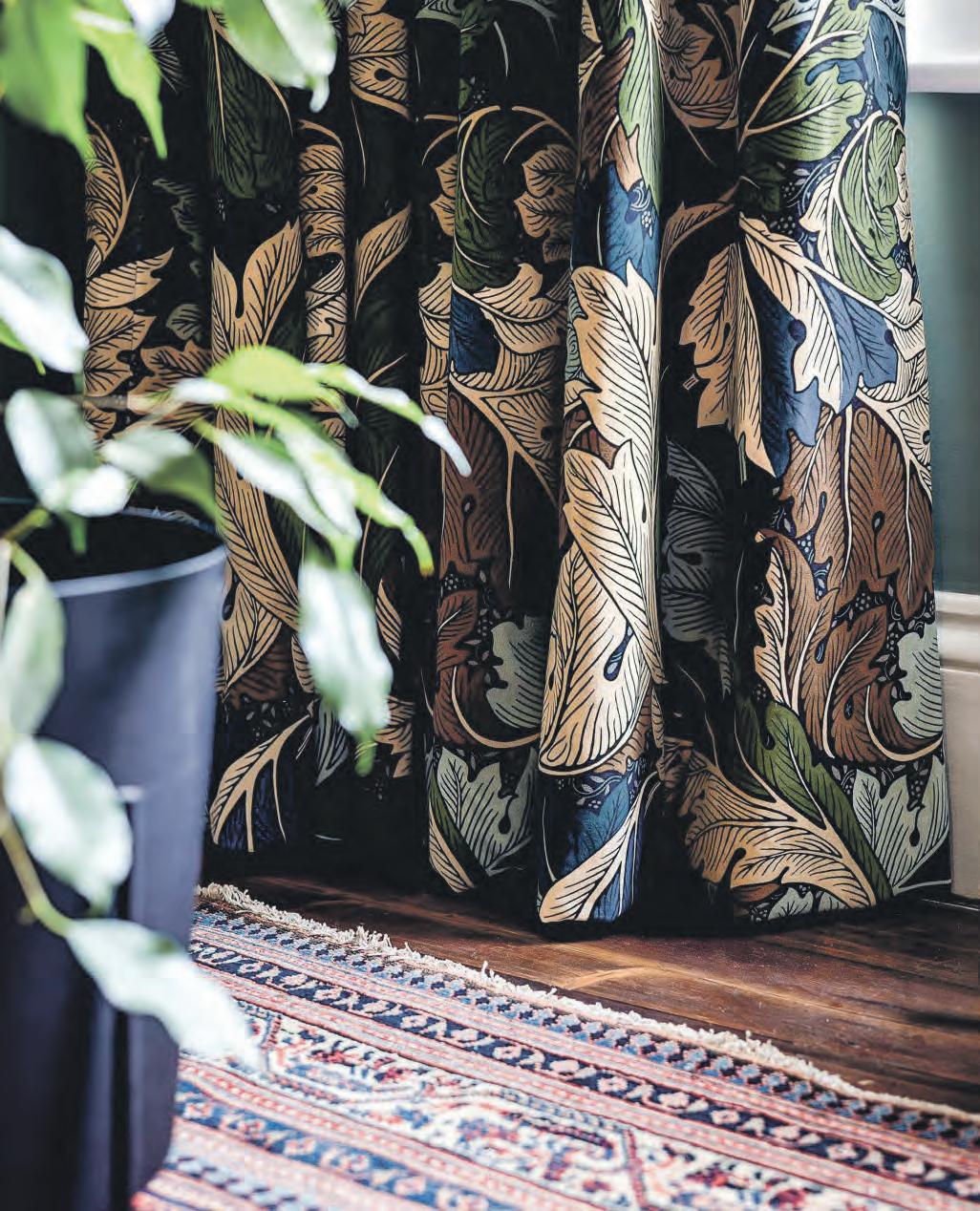
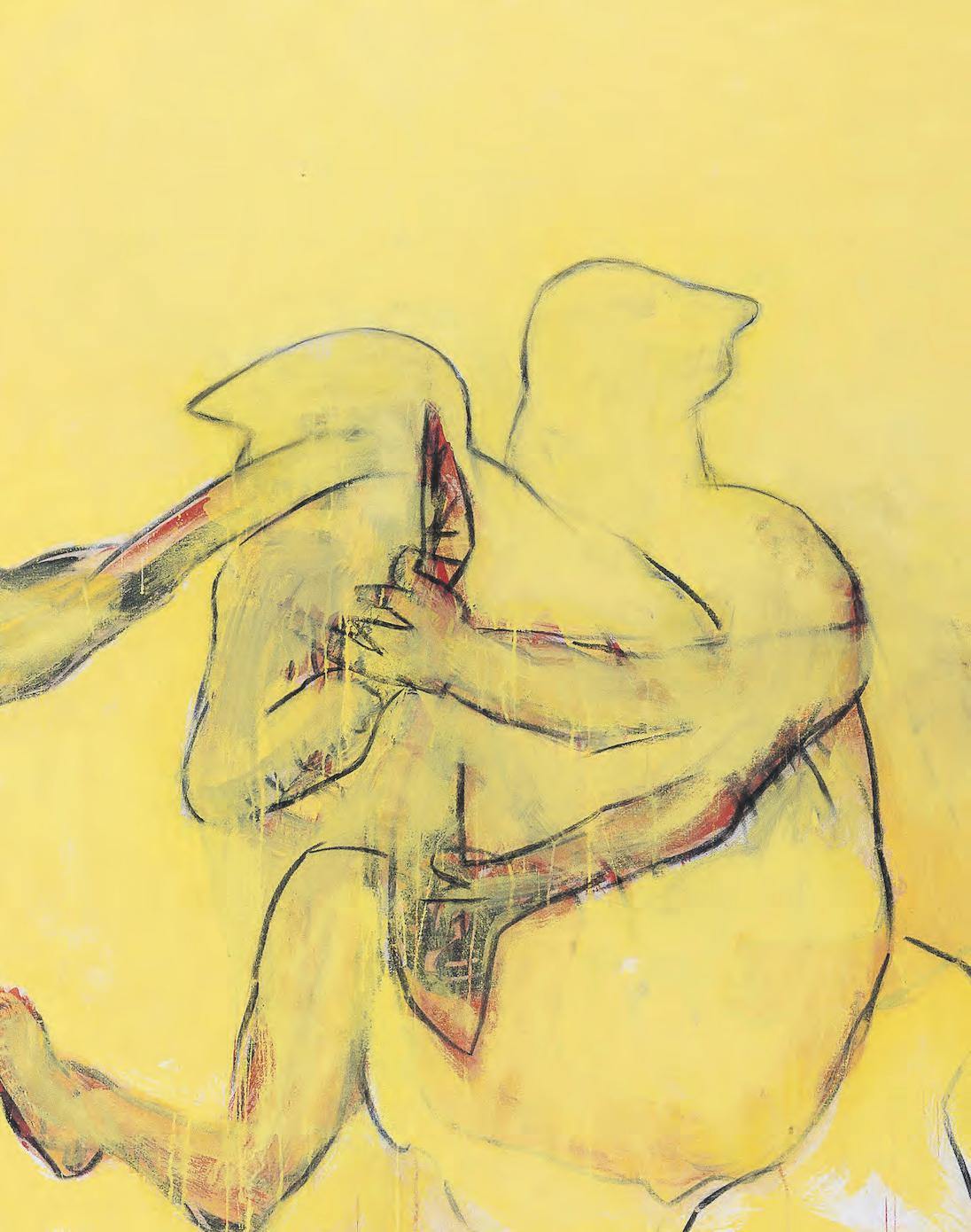
The author and illustrator Jean Adamson, who was Peckham born and bred, died in December at the age of 96.
Jean created the Topsy and Tim series of books with her late husband Gareth. With more than 130 titles published and 21 million copies sold, it is one of the most widely loved series in children’s literature.
Jean was born on 29 February 1928 and it was frequent visits to her local Peckham library that fuelled her youthful imagination and love of reading.
“As a child I was an avid reader, working my way through the whole of the children’s section in Peckham Library,” Jean told the BBC in 2013. “My absolute favourites were the Tales of Toytown series, Edward Lear’s nonsense poems, Aesop’s Fables and Milly-Molly-Mandy.”
By the time the second world war was coming to a close, the now 16-year-old Jean had become “hooked on drawing”. Pursuing her passion, she left school to attend Goldsmiths in New Cross to study illustration.
“Art school at 16, just before the war ended, was like heaven,” she said. “I couldn’t believe it, drawing all day!”
It was at Goldsmiths that she met her future husband, Gareth Adamson, a Liverpudlian two years her senior who was also studying illustration. On completing his studies, Gareth went to work for an advertising agency in Newcastle while Jean taught at Goldsmiths and then worked for an animation unit on Dover Street in Mayfair, creating “stylish, amusing cartoons”.
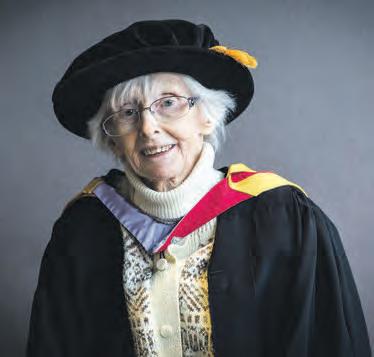
Jean and Gareth went on to have three children of their own – Leo, Gabriella and Kate – whose childhoods provided material for many of the later books in the series.
The family moved to Cambridgeshire in 1968 and sadly, after 25 years of marriage, Gareth died in 1982 of a brain tumour, the family’s distress at his passing accentuated by the fact that his condition had been originally misdiagnosed.
Jean continued the Topsy and Tim books without him, ensuring that his name and legacy lived on, and finally earning financial security after years of debt and struggle.
In 2016, Jean’s illustrious career, and her southeast London roots, were recognised by the award of an honorary fellowship by her alma mater, Goldsmiths – an appropriate reward for her skill in shepherding Topsy and Tim through the considerable social, political and cultural changes of the past seven decades.
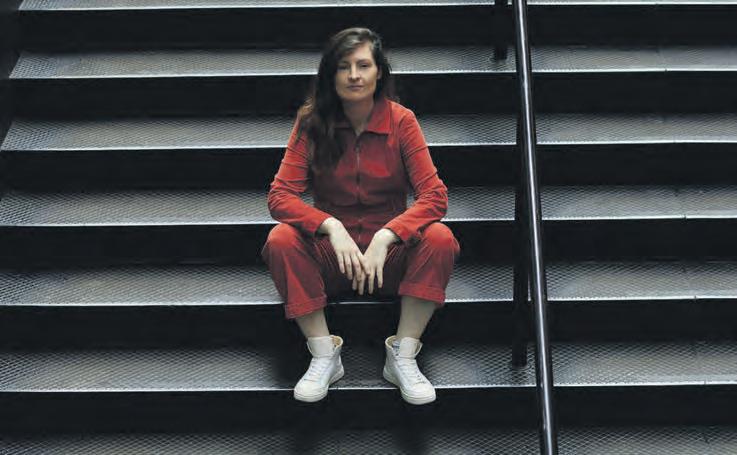
The Peckham resident Madeleine Brettingham has written a play that is coming to a London theatre next month.
Dear Martin is a darkly comic play about mental health, redemption and two men finding a moment of connection in their otherwise lonely lives.
Dave is a long-suffering husband, while Martin is the psychopath who’s been exchanging erotic letters with Dave’s wife from a high-security hospital.
When Dave finally gathers the courage to confront him, Martin proposes a bargain: he will help Dave reignite his marriage if Dave helps convince Martin’s psychiatrist that he’s actually made a friend.
Brettingham’s comedy-writing credits include Frankie Boyle’s New World Order, That Mitchell and Webb Look, The Kumars, Have I
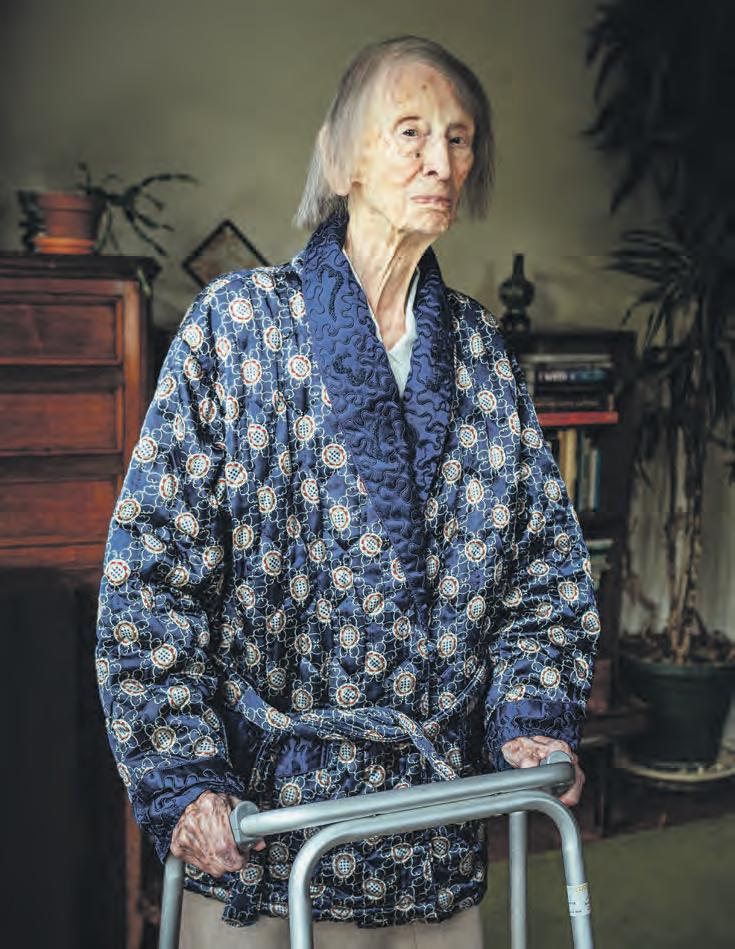
Julia Hawkins, a photographer for this paper and our sister title, the Dulwich Diverter, has been named one of the winners of the Portrait of Britain awards.
The shortlisted images were announced last November before the winning portraits were displayed across the country on digital billboards, in locations including high streets and transport hubs.
Portrait of Britain is an annual photography award run by the British Journal of Photography. It aims to capture the essence of the UK through portraiture, elevating voices from marginalised communities and celebrating the resilience of a united, diverse nation.
Some 50 portraits and testimonials about loneliness gathered by Hawkins will be published in a book by the School of Life later this year.
Baker was born in China in 1917 and lived there until 1942, when she settled in her parents’ homeland of Canada. She stayed there until she met and married a British man and moved to London in 1961.
A lover of sport, her main passion was lawn tennis, but she enjoyed athletics too. She was also an adventurer, travelling across and volunteering in places as diverse as Algeria, Tibet, Mexico, the US and India, where she saw Mahatma Gandhi when she was 25.
Got News for You, Would I Lie To You?, Horrible Histories and Radio 4’s The News Quiz. She also writes about comedy for the Times Literary Supplement.
She has teamed up with Wiebke Green (director of the New York Times critic’s pick The Poltergeist and Tarantula, described as “extraordinary” by the Guardian) to bring Dear Martin to the Arcola theatre in east London from March 5-29.
Brettingham was nominated for the Funny Women awards in 2020, placing in the top three for best comedy writer, and her scripts were the runner-up and winning submissions at the British Animation awards in 2022 and 2024.
The Arcola theatre is next to Dalston Junction station, a short journey on the Overground from Peckham Rye
Hawkins took the above photo of Julia Baker in 2023 as part of her portrait photography project, On Loneliness, which aims to normalise talking about this universal human emotion.
Peckhamplex hosted a sold-out screening of Hard Truths, the new Mike Leigh film, last month.
It was followed by a Q&A session with the director and some of the cast including Michele Austin, Marianne Jean-Baptiste, David Webber and Tuwaine Barrett. The event was moderated by the playwright and screenplay writer Ade Solanke.
Leigh is pictured (centre) at Peckhamplex with Jean-Baptiste (left) and Austin (right). You can read our profile of Jean-Baptiste on page 11 of this issue.
Baker was looked after by her son Tom in her home until she died in November last year, shortly after being told her portrait was one of the winning images.
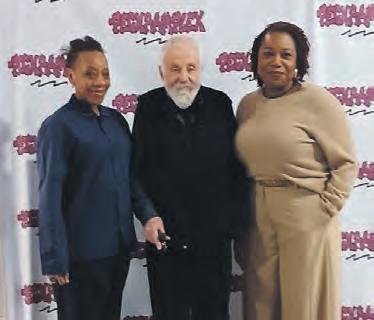
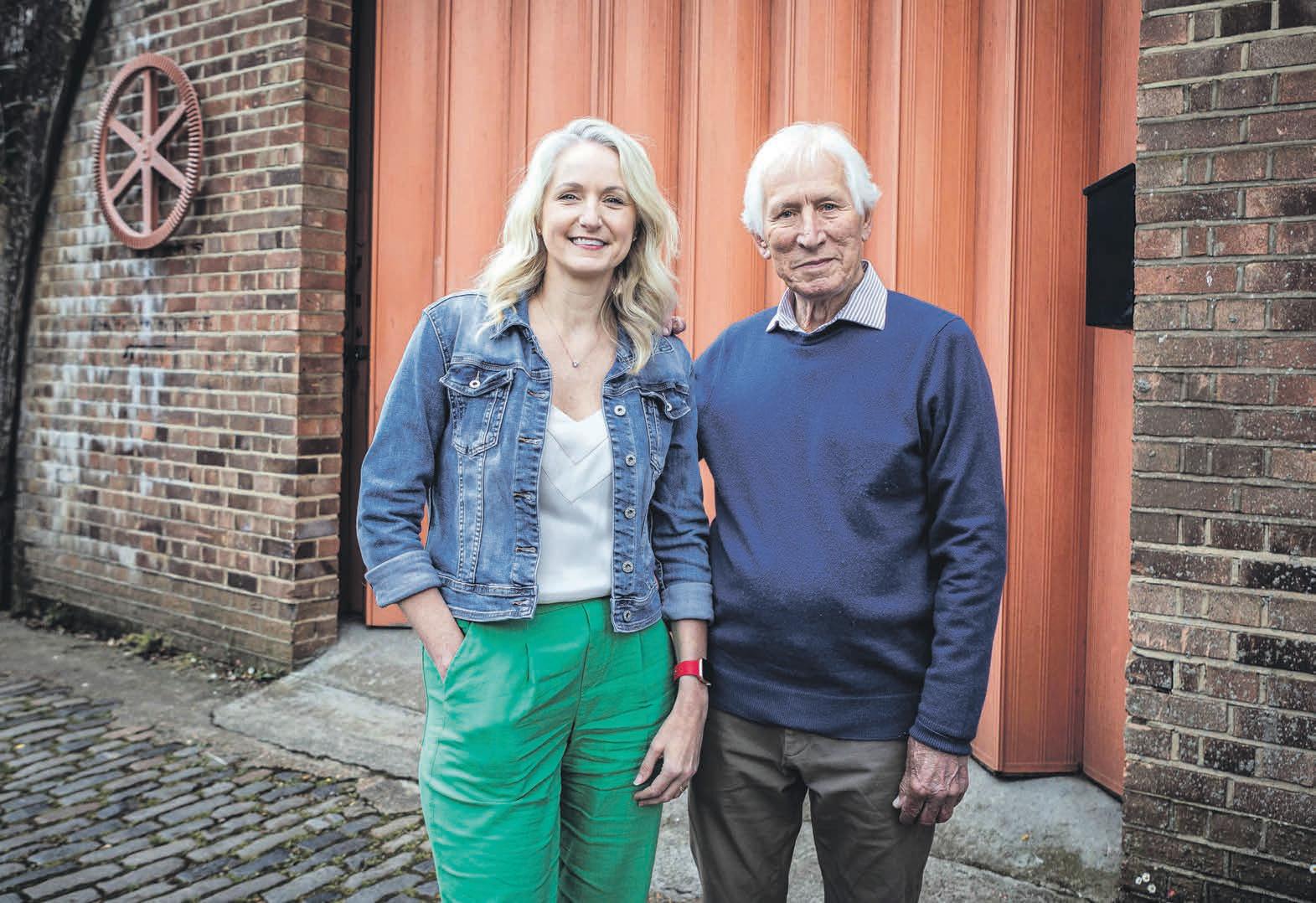
GEORGE JOHNSON LIFTS IS THE OLDEST SERVICE LIFT MANUFACTURER IN THE UK – AND IT’S BASED RIGHT HERE IN PECKHAM. We meet the current owners of the family business, whose relative founded the company in the 1850s
A railway arch just off Bellenden Road is the home of the oldest service lift manufacturer in the UK, George Johnson Lifts.
The managing director of the company, Ian Whitty, is related to the founder – his great-greatgreat grandfather’s uncle was the original George Johnson, who started the business in the 1850s. Johnson, a builder by trade, was an inventive man who set out to design a manually operated hoist to replace the somewhat tedious job of carrying bricks up a scaffold during building construction.
This hoist was first produced in about 1860 and it was thought to have caused several strikes by labourers who saw their jobs at risk.
With the success of this venture, Johnson turned his hand to the design of a range of lifts and dumbwaiters. These were all handoperated, with many models available for carrying anything from a dinner plate to a fully grown man.
The original GJL factory, which was located on St John’s Hill in Battersea, employed many staff
and all the lifts were handmade, mainly from timber by skilled carpenters. The engineering components were hand-forged.
The first machine to arrive on the factory floor was a treadle-operated lathe, which was revolutionary technology at the time and no doubt caused a stir among staff.
The company had its own transport in the form of a horse (provided by Johnson’s brother), with a choice of three horse vans. It even had a stable on-site.
In about 1870 the company bought a steam engine to power all the machinery, and that was superseded by a gas engine in 1904. During the 1930s electric power arrived and modern machinery once again replaced the old.
In 1866, Johnson introduced his nephew to the business, and gradually handed over GJL to other younger relatives.
Today there are still two members of the founding family managing, operating and financing the business – Ian and his daughter Olivia.
The business was sold in 1994 but Ian bought the GJL part back when the larger company hit hard times, and he moved over to Peckham in 1996.
Now, almost 30 years later, I meet up with Ian and Olivia just around the corner from their business in the Prince Albert pub.
The duo, who are instantly amiable company, tell me that one of their staff members has been working for GJL for 35 years, since their Battersea days.
They’re a small team, so it must be crucial for them to all get along well – whether they’re family or not.
Ian was introduced to the company by his grandfather. At that time, he also had two uncles working in the office. He had left school when he was 16 in the early 1960s, and worked for five years at a company in Dartford.
“My grandfather had said to me: ‘You’re not just going to come and join our company. If you think you’re interested in engineering, in lifts, you’re going to have to do an apprenticeship for
a large company first. I want you to bring in your own ideas.’”
Ian didn’t get his own desk straightaway when he eventually turned up on the doorstep of GJL.
“I had to work in the lathe shop, then the carpentry shop and then work in the fitting shop,” he says. “Then I had to go and do some servicing. If you don’t do all of that, you don’t know the business. It then made it easy to earn respect from people.”
The company took over the Peckham railway arch that the Black Lesbian and Gay Centre had occupied for more than 10 years.
Against the backdrop of 1980s politics, the rise of Thatcherism and HIV and Aids, the centre played a groundbreaking role in the struggle for LGBTQIA+ equality. It raised awareness and challenged homophobia and racism in wider society by providing advice, counselling, a helpline, a library, newsletters, social and cultural events and community resources, and though it was based in London, the project reached people nationwide.
Ian and Olivia have seen some considerable change in terms of who has occupied the arches over the past three decades, though there is another family business, their near neighbour South London Clutch, that has been there longer than they have.
GJL had been based in Peckham for more than a decade when Olivia joined the family firm in 2007 when she was 25.
“I had been at university, I did health and fitness management there,” she says. “I then worked in Southampton at a fitness centre. It got to the stage where there wasn’t really anything else that I wanted to do.
“Dad looked through my CV and he said: ‘Actually we need someone at my place. Come back home and work here with us.’”
After a three-month trial, Olivia never looked back and she has been working for the business for 18 years.
“Now she’s running the company more than I am,” Ian says. “She brought us all the technical knowledge that a young person can give. All the stuff that I’ve always avoided!”
Ian tells me that he enjoys going out and meeting people. GJL’s list of clients in the food and drink world is hugely impressive, with customers ranging from Nando’s to the Wolseley.
“I’ve known so many of them for so many years,” Ian says. “We started working with Nando’s in 1998, two years after we arrived here in Peckham.
“Since then, we’ve done all their lifts and all their openings here in the UK. They only had three when we started working with them [compared with 473 today].”
GJL has also worked with the restaurant chain Bill’s, and with the renowned restaurateurs Chris Corbin and Jeremy King, known for launching
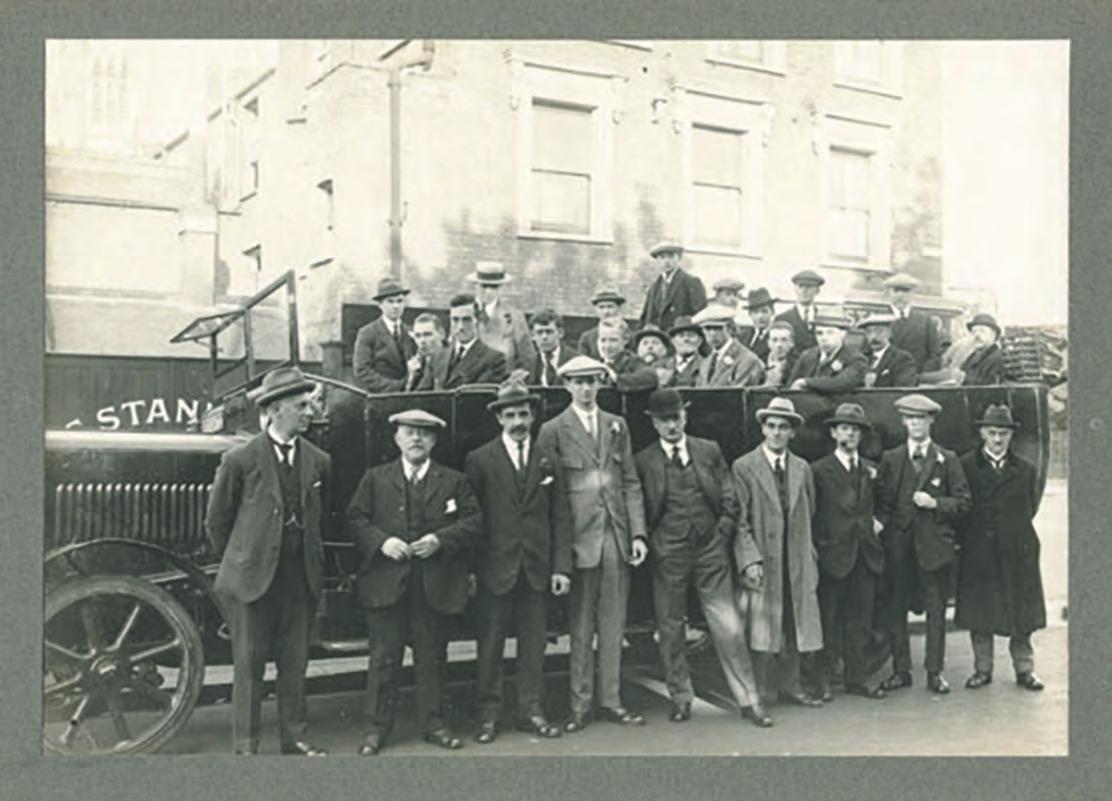
fine-dining destinations including the Wolseley on Piccadilly. GJL installed six lifts for the restaurant.
Another project involved working at the House of Commons. GJL was approached by a consultant to provide a small electric service lift to replace an existing hand-powered lift for documents, which is situated just behind the speaker’s chair.
Other jobs have involved installing lifts in a central London pub, for exhibitions and on boats. They even created a specially designed pet lift

with a mesh door for a client’s dog who was struggling to walk up the stairs.
There have been famous clients, too. “We’ve worked with a few well-known people,” says Ian.
“We did a lift for an actor who lived in London for donkey’s years – Laurence Olivier. We did a lift in his private house when he was married to Joan Plowright.
“And one of the Spice Girls and Gordon Ramsay. We had done a couple of Gordon’s restaurants, then we did a lift for one of his houses.
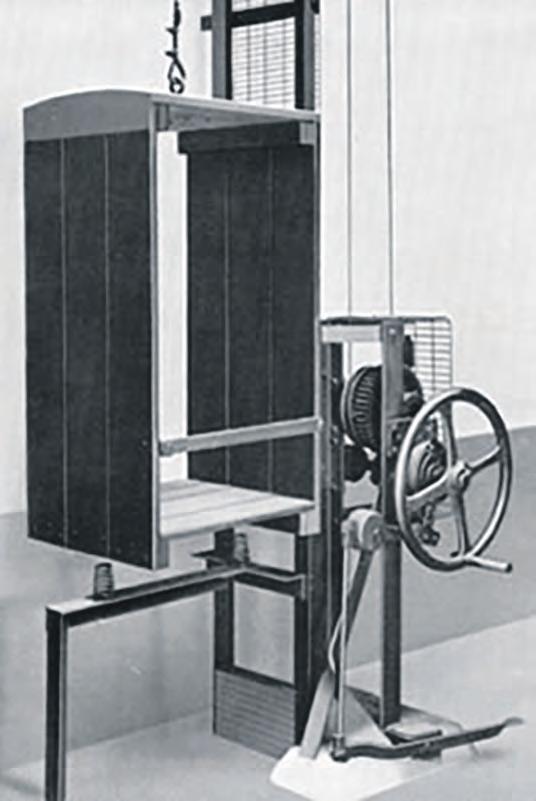
“We also had a request for a lift from a famous footballer. Just for his shirts.”
I ask Ian, who works two days a week, if he has any plans to retire. “We like what we do,” he says. “I’m not sure when Olivia would like to see me go. I’m not sure when I’ll know if I’ve outstayed my welcome.”
“Oh, I’ll tell you,” laughs Olivia. Ian confesses that modern technology isn’t his forte, and GJL has moved a lot with the times. “But you’re so good at talking to people,” says Olivia. “And that’s what the customers like.”



Improve How You Move, Look and Feel with Antonella Cavallone BA MSTAT
A practical method for improving freedom of movement and coordination - using skilful guiding touch and explanation, I work with you to let you discover your natural easy posture. Learn a new, more efficient use of the body for improved general wellbeing and easy functioning in daily activities, sitting, walking, lifting, deskworking, exercising.
I can teach you how to identify and prevent your tension habits and strategies to develop lightness and ease in the use of your body.
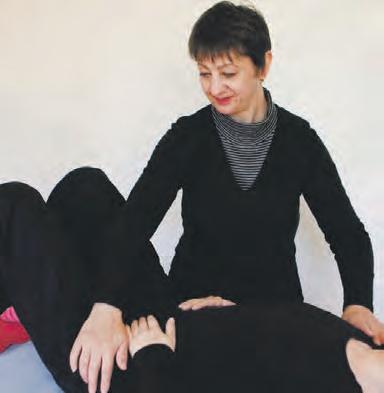
If you wish to stop being caught between the cycle of pulling yourself up straight and slumping, come and learn how to gain natural easy posture.
Learning the Technique is effective for:
• Muscular and joint pain
• Repetitive strain injury (RSI)
• Stiffness in movement
• Headache and stress
• Postural rebalance
MARIANNE JEAN-BAPTISTE HAS EARNED A FLURRY OF AWARD NOMINATIONS FOR her new film. We look at the life and career of the Peckham-raised actor
Marianne Jean-Baptiste’s latest film, Hard Truths, was officially released in the UK last month.
For her performance, Marianne – who was born in Camberwell and raised in Peckham – received a Bafta award nomination for best actress in a leading role. This was in addition to winning best actress at the New York Film Critics Circle awards, the Los Angeles Film Critics Association awards, the British independent film awards and the National Society of Film Critics awards.
The film was directed by the legendary Mike Leigh, whom Marianne had worked with before, most notably on the Oscar-nominated film Secrets & Lies.
Hard Truths centres on Pansy, a woman who seems constantly angry at the world and regularly gets into scrapes with everyone from shop assistants to her dentist.
We follow Pansy as she navigates various everyday situations, with her attitude to life having a detrimental impact on her husband, son and sister, who love her but can only handle so much.
Based in the US for the majority of the past two decades, Marianne is undoubtedly one of the most accomplished and versatile actors to ever hail from south-east London, having excelled on stage, screen and television in a career that has spanned more than 30 meritorious years.
She was born on 26 April 1967 to an Antiguan mother, who worked in a care home, and a St Lucian father, who was a foreman for an events company. Both parents had moved from the Caribbean to the UK in the 1950s and Marianne was raised in Peckham, attending St Saviour’s and St Olave’s school near Elephant and Castle. Marianne’s fascination with acting and show business was partly fuelled by a childhood love of the cop show Starsky & Hutch. Dance and music were also among her passions, and she took classes at Trinity Laban in Greenwich from the age of eight.
After leaving school, Marianne attended Rada, where she excelled; on graduation she wrote her own acclaimed one-woman show, Ave Africa, which she later performed under the aegis of the Double Edge Theatre company.
The watershed year for Marianne was 1992, when her path first crossed with that of the theatre and film director Leigh – who himself has a local connection having studied at the Camberwell School of Art in the 1960s. Marianne’s professional relationship with Leigh would transform her career. Though she was unsuccessful auditioning for a role in his film Naked, the director wrote her a letter promising to work with her in the future. “I thought, yeah, right,” Marianne later recalled.
However, Leigh was as good as his word, hiring her a year later, in 1993, to appear in his ambitious stage production It’s A Great Big Shame at Stratford East.

Then Leigh cast Marianne for the second time, in the film Secrets & Lies, as Hortense Cumberbatch – an optometrist searching for her birth mother, who unexpectedly turns out to be the white factory worker Cynthia Purley (Brenda Blethyn).
Leigh’s improvisatory and collaborative approach, incorporating intense rehearsal, is unusual within the cinema industry, but struck an immediate chord with Marianne.
you go wanting to be fed and you have to learn to feed yourself in the end.”
Secrets & Lies was a runaway success, with Marianne’s brilliant and wonderfully natural and human performance winning worldwide acclaim. The film snaffled the prestigious Palme d’Or award at the Cannes film festival in 1996, and also secured seven Bafta and five Oscar nominations – with Marianne nominated by both organisations in the best supporting actress category, as well as for a Golden Globe award. No British-born black actor had ever been nominated for an Oscar before.
Marianne learned of her Oscar nomination in disorienting circumstances after being woken up by her agent telephoning to tell her.
On the night, she lost out to Juliette Binoche’s performance in The English Patient, and later admitted that the whole Oscars experience was somewhat surreal.
“I don’t remember a lot of what happened that night,” she told the Guardian in 2015. “You’re sat there, four rows from the front, Céline Dion is belting out a song louder than a f***ing trumpet, Goldie Hawn comes up to you and tells you she loves your work. You’re like, what work? D’you know what I mean? And there’s Anjelica Huston and you’re just going, ‘Oh my God, oh my God, oh my God!’”
Despite the success of Secrets & Lies, Marianne’s career over the next few years was somewhat sporadic. In 1997, she was –shamefully – excluded from a group of young British actors who were invited to celebrate the 50th anniversary of the Cannes film festival by the arts organisation British Screen. Marianne did not take the snub lying down. “The old men running the industry just have not got a clue,” she said at the time. “They’ve got to come to terms with the fact that Britain is no longer a totally white place where people ride horses, wear long frocks and drink tea... It is a shame on Britain. I see myself as British and I want to be celebrated by Britain.”
Marianne reunited with Leigh in 1997, cowriting the musical score for his film Career Girls, and in the process proving her versatility and creativity. She also appeared in a play for the renowned theatre director Peter Brook in Paris in 1999, the same year she played Doreen Lawrence opposite Hugh Quarshie in Paul Greengrass’s ITV drama The Murder of Stephen Lawrence.
However, further high-profile opportunities for a black actor such as Marianne in the UK were sadly limited. As a result, after a few years working on both sides of the Atlantic, Marianne based herself almost exclusively in the US after the turn of the millennium.
“My parents came here [to Britain] from the Caribbean for work in the 1950s and to expand their lives. I don’t see that I have done anything different [by working in the US],” she reflected.
“It’s extremely liberating because you create a character from scratch,” she later explained. “You get to spend an incredible amount of time doing research that most people would look at and say, ‘My God. These people don’t have to do that much work’.
“But when you look at Mike’s films, you can see that there’s something different about them. The characters are just a bit deeper than normal. And it also sets you up for your next job, because
In the US, Marianne’s career has thrived. She played the role of FBI agent Vivian Johnson in the long-running and hugely popular CBS television police drama Without a Trace from 2002 to 2009, and has assembled a host of other film and TV credits, as well as appearing in Shakespeare in the Park in New York City. She has even returned to the UK periodically – appearing on stage at the National Theatre in James Baldwin’s The Amen Corner in 2013 and in series two of Broadchurch in 2015, as well as in the play Hang at the Royal Court.
Throughout her career, Marianne has retained her class, but also an admirably down-to-earth nature.
“I still take my own lunches to work,” she told the Radio Times with a chuckle a few years ago, while admitting that she does miss aspects of British life, namely: “Caribbean culture. The sense of humour. And theatre.”
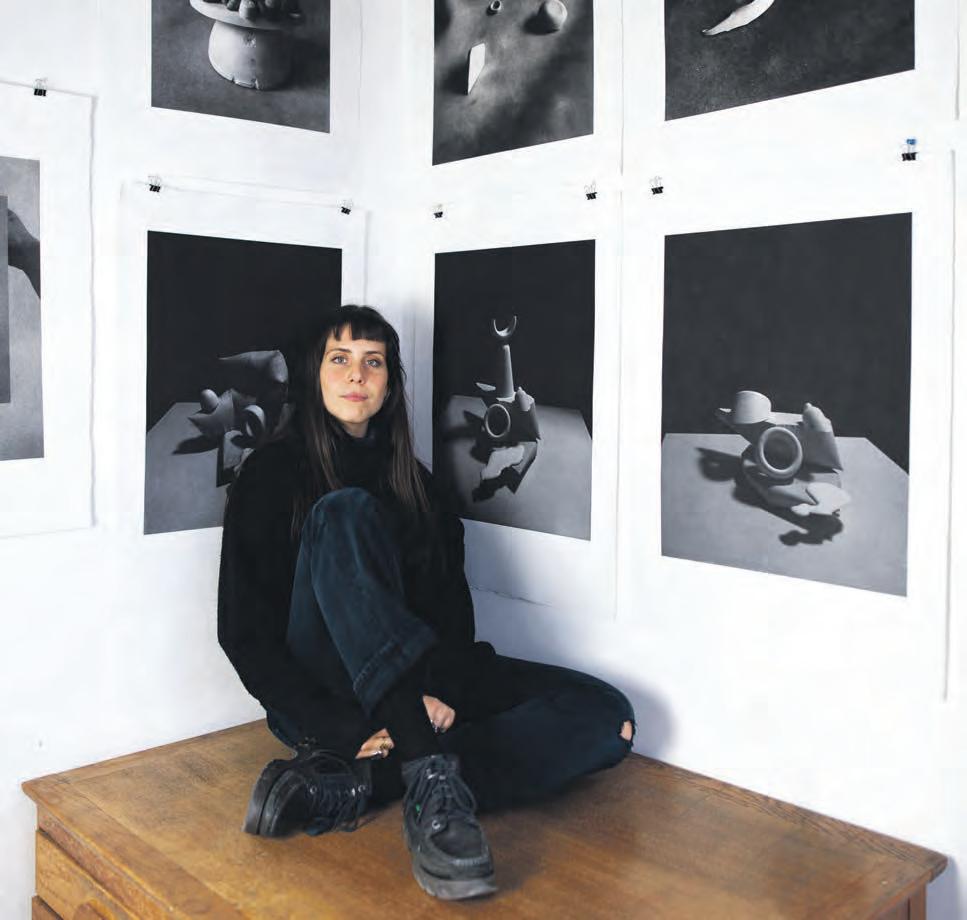


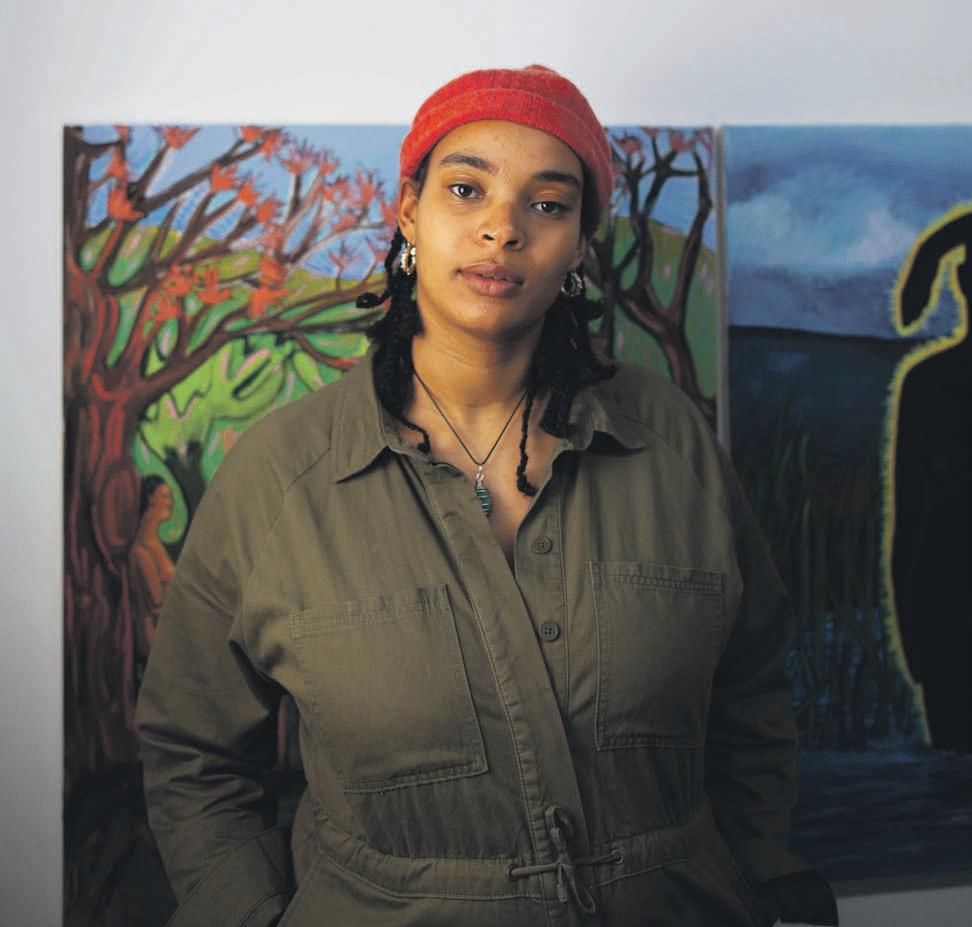

During lockdown, I began photographing artists in their studios as a way to stay creative. What started as a personal project became a book, titled Artists.
I’m now starting a new project to document Peckham over the next year – capturing its people, businesses and community.
I’ll be walking the streets with my camera and offering free photos in exchange for the chance to document local life. People are welcome to use them for personal or business purposes.
To contact Brynley, visit brynleyodudavies.com

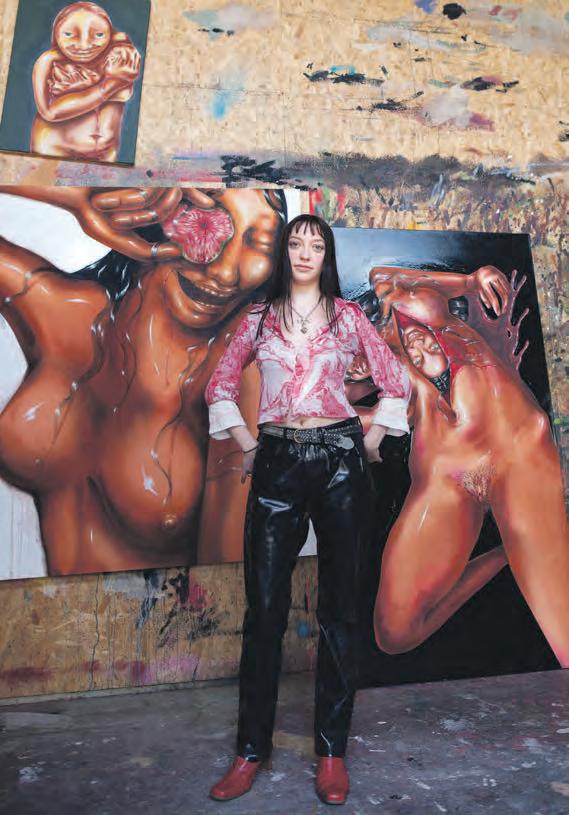
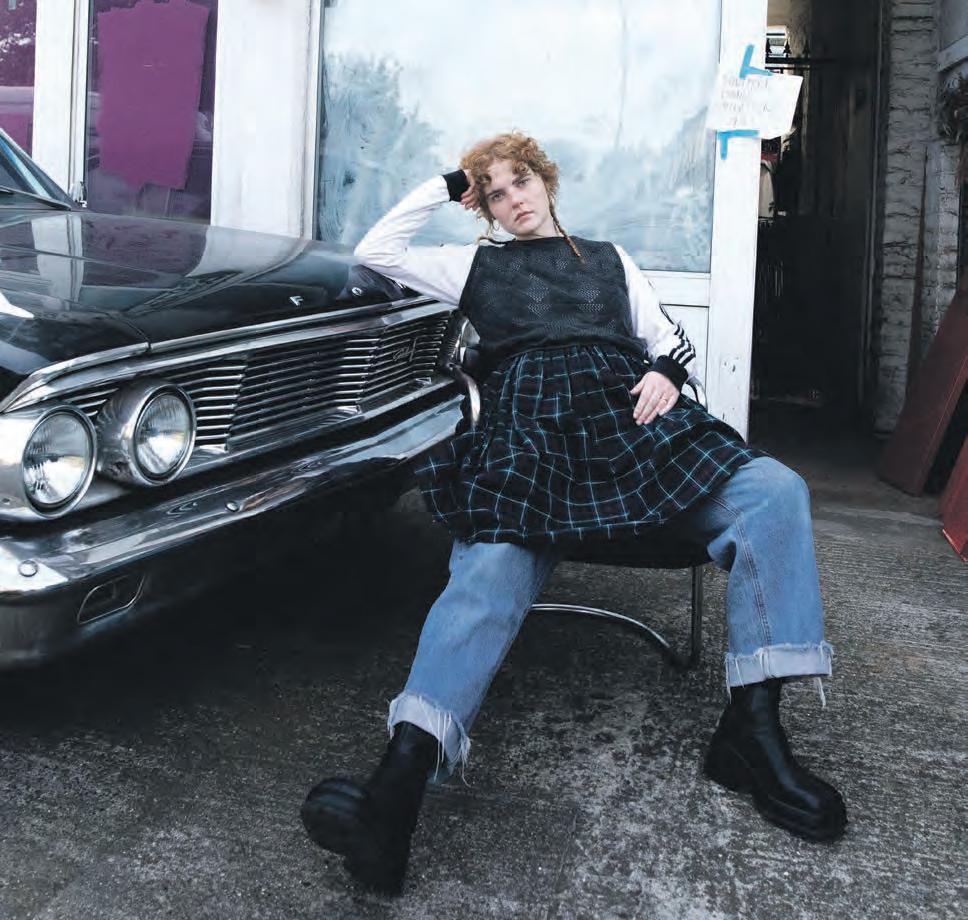
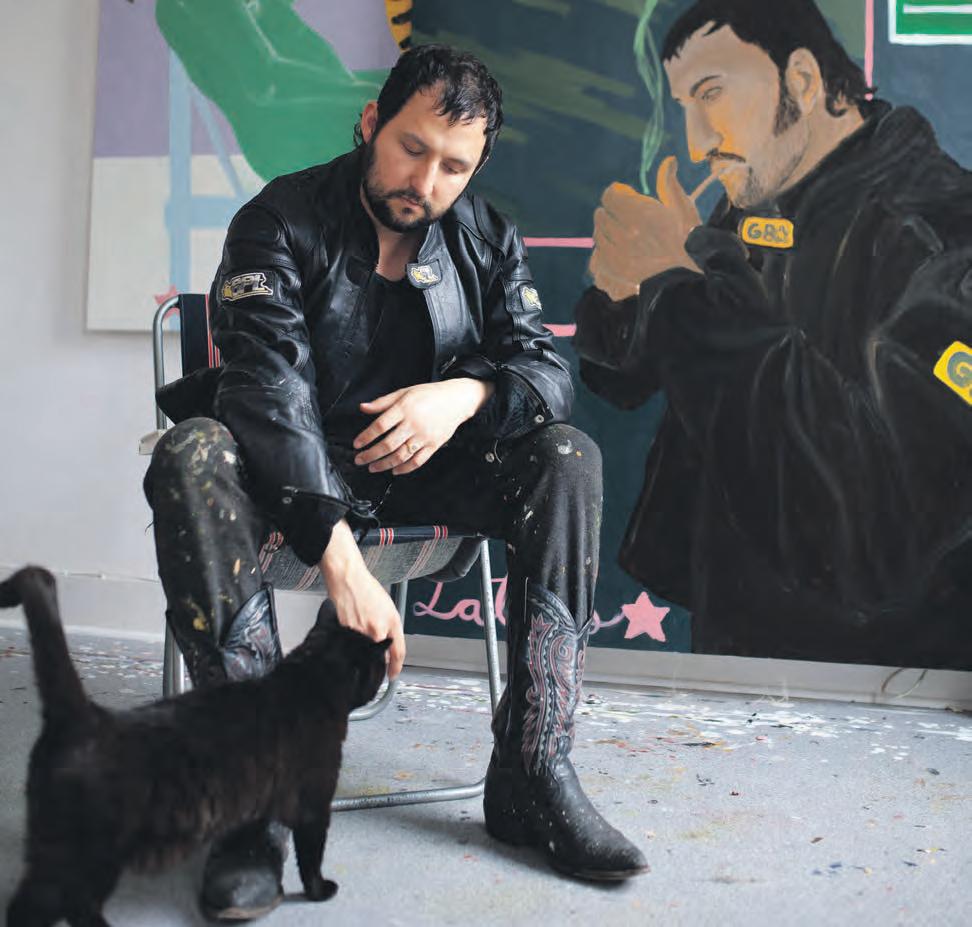

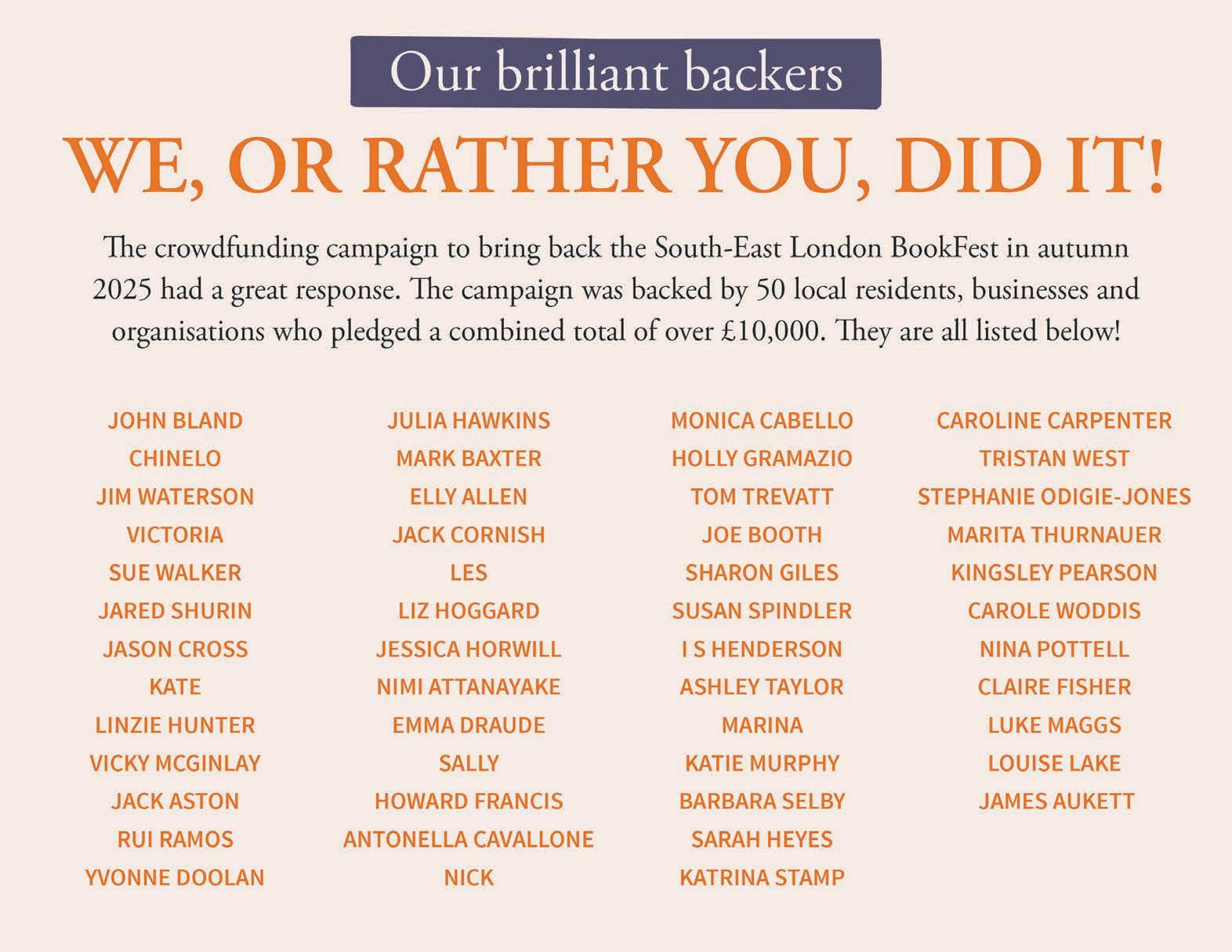


Are you tired of searching for top-quality meat that satisfies your taste buds? Look no further than the Proud Sow! With years of expertise and a passion for perfection, we believe in the art of butchery.
What sets us apart is our commitment to locally sourced products. We work directly with trusted farmers who share our dedication to ethical farming practices and superior animal welfare.
We take pride in creating a personal and welcoming experience for all our customers.
When it comes to your meat, settle for nothing but the best. Trust the Proud Sow to bring you the ultimate culinary adventure. Visit us today!
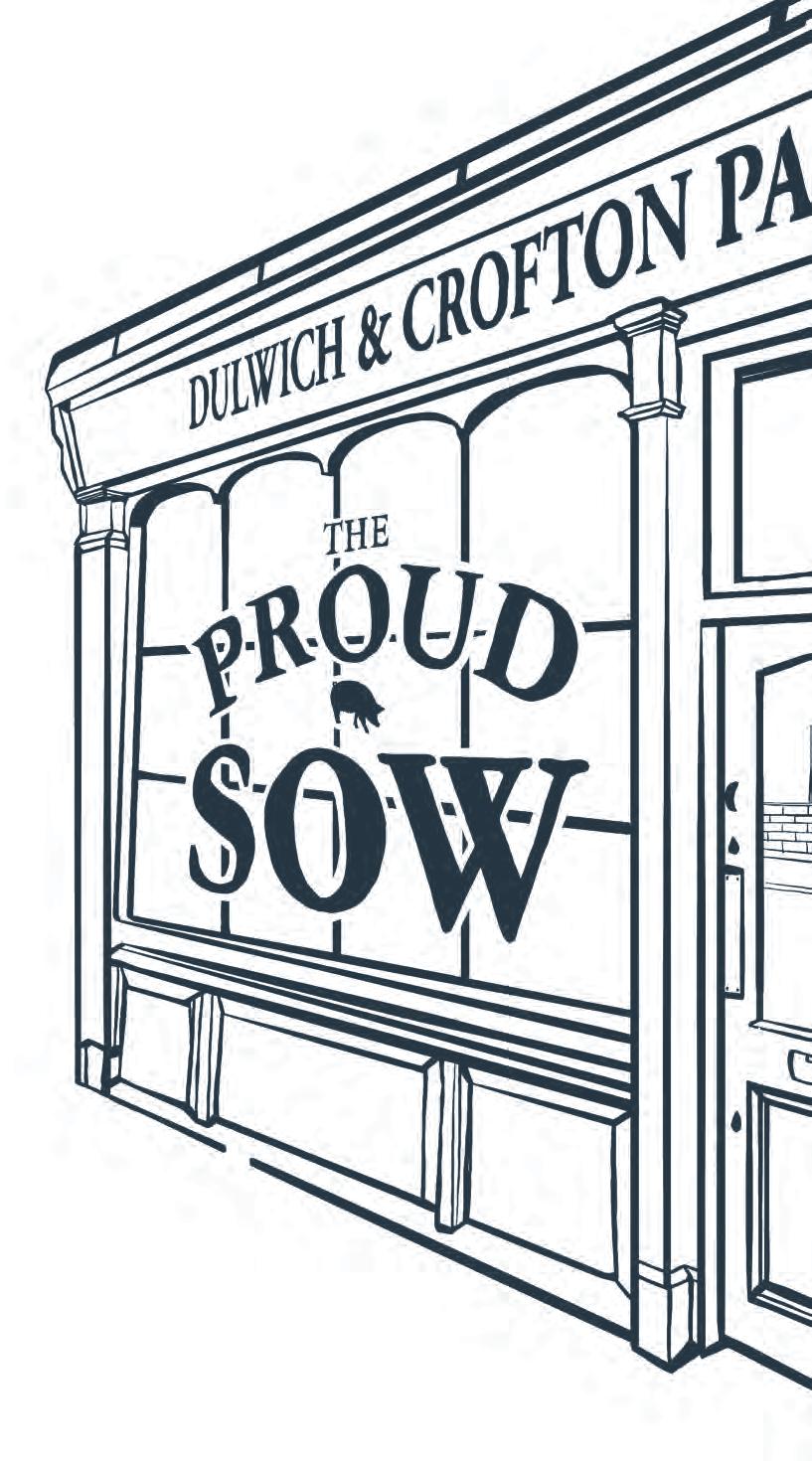
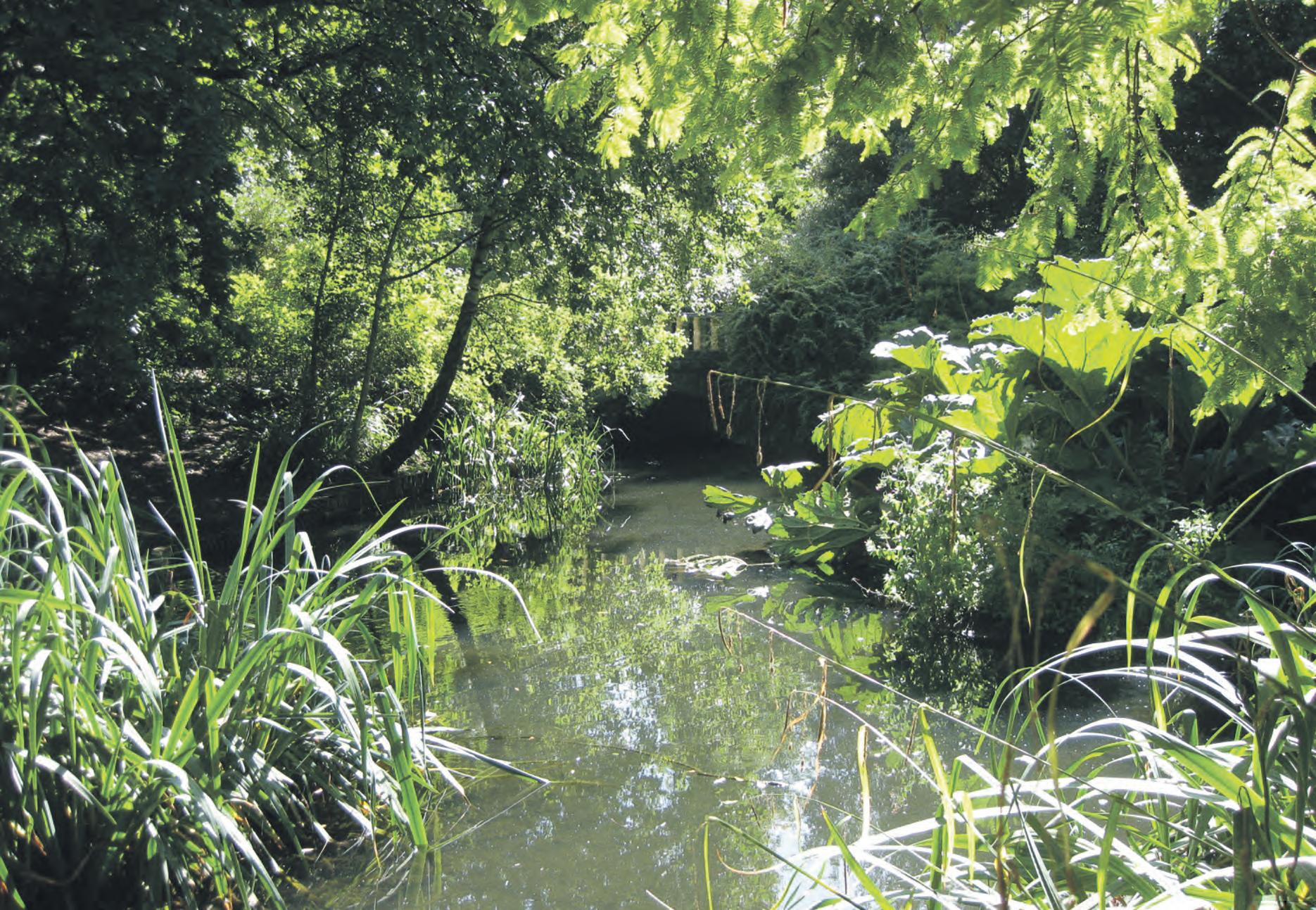
PECKHAM GOT ITS NAME FROM THE RIVER PECK, WHICH FLOWS THROUGH THE AREA.
A local author traces the historic waterway’s meandering route, from One Tree Hill to the Thames
Have you ever wondered what happened to the lost River Peck? I know I have. I wondered about it in a slightly obsessive way for a couple of years during the strange era of Covid lockdowns, when the highlight of my day was a looping circuit of Peckham Rye Park and Common. I found, as the world was forced to pause, that it was easier to imagine a quieter time, before there were roads and buildings and cars and trains, and planes always passing overhead. History was closer than it used to be. Which is how I became fixated by the Peck, and where it went.
I’d known for a while that Peckham got its name from the river – “village by the Peck” – and that rye means “watercourse”. I knew that a small section of the Peck still ran through Peckham Rye Park. And I’d heard that the river had once run across what is now Peckham Rye Common. I wondered what course it took across the common, and where it went from there. Was it lovely? Was it deep or was it more of a trickle? When and why was the decision made to deprive Peckham of its river?
I found an excellent book called London’s Lost Rivers: A Walker’s Guide, by Tom Bolton, which maps out the Peck’s original course. The Peck, Bolton explains, originates as an underground stream at the top of One Tree Hill and flows downhill through what is now the Honor Oak Reservoir, down through the site of Harris Girls’
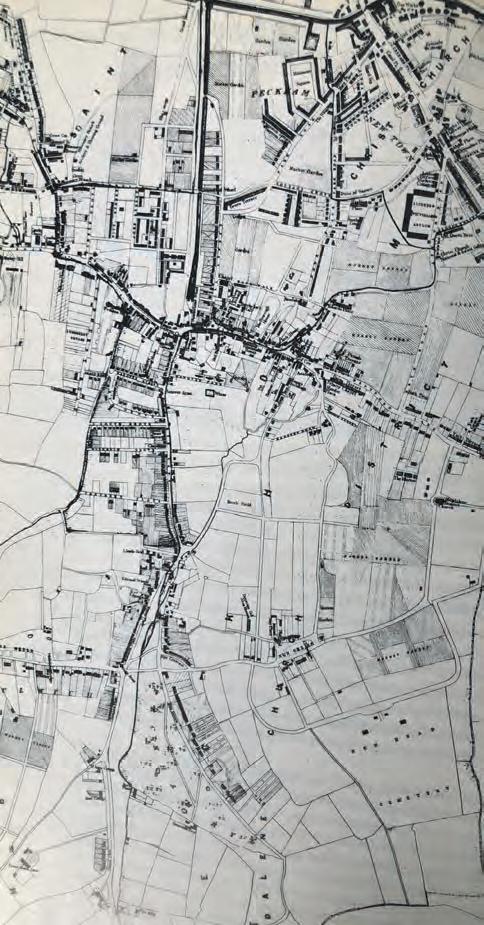
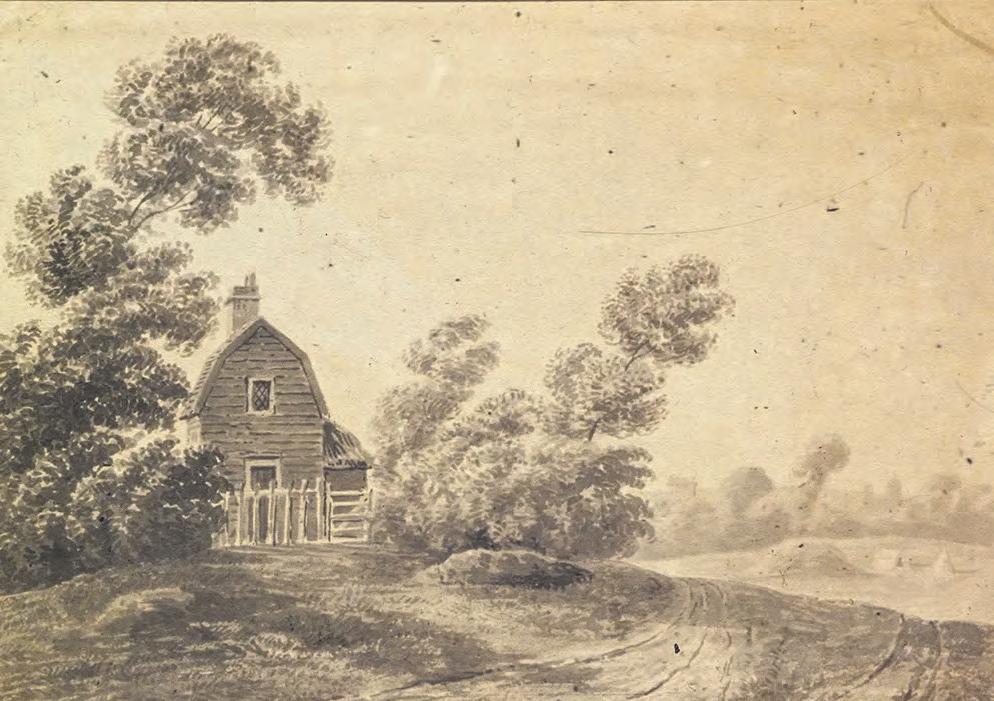
Academy and into the park – today the Peck can still be seen emerging from a grille under Homestall Road. The Peck’s channel through the park is more or less the same as it was when the land was in its natural state, according to Bolton.
Today the Peck disappears into a pipe at the base of the ornamental pond near the large oval flowerbed, but it would have run past a farmhouse – Homestall Farm – on the bend of what is now Straker’s Road, tracing the boundary
between the common land to the north and the farmland – which is now the park – to the south. Some old maps show a tributary of the Peck originating on Dawson’s Hill, where the Dawson’s Heights flats are today. This tributary ran along the land that now forms the western edge of the park, and met the One Tree Hill branch of the Peck at Homestall Farm.
The river would then have run across the common from the site of the main park gates, cutting across the low-lying land and meeting East Dulwich Road roughly where the carved totem pole is today. It then ran through the grassy area where a derelict blue fountain remains as a reminder of Peckham Lido.
The river continued due north, then veered gently east at the turning by the Nags Head. It meandered through what is now a railway arch on Consort Road, onwards to the Old Kent Road, through what is now Millwall Football Club, where it met the Earl’s Sluice, and finally on to join the Thames at Rotherhithe.
My husband and I walked this route on a cold lockdown afternoon, and we tried to imagine it as a journey through market gardens beside a babbling brook, rather than the industrial landscape it has become. There was something eerie about this lost river, which I’d learned was still there below the tarmac, channelled into Victorian sewers. Continued overleaf...
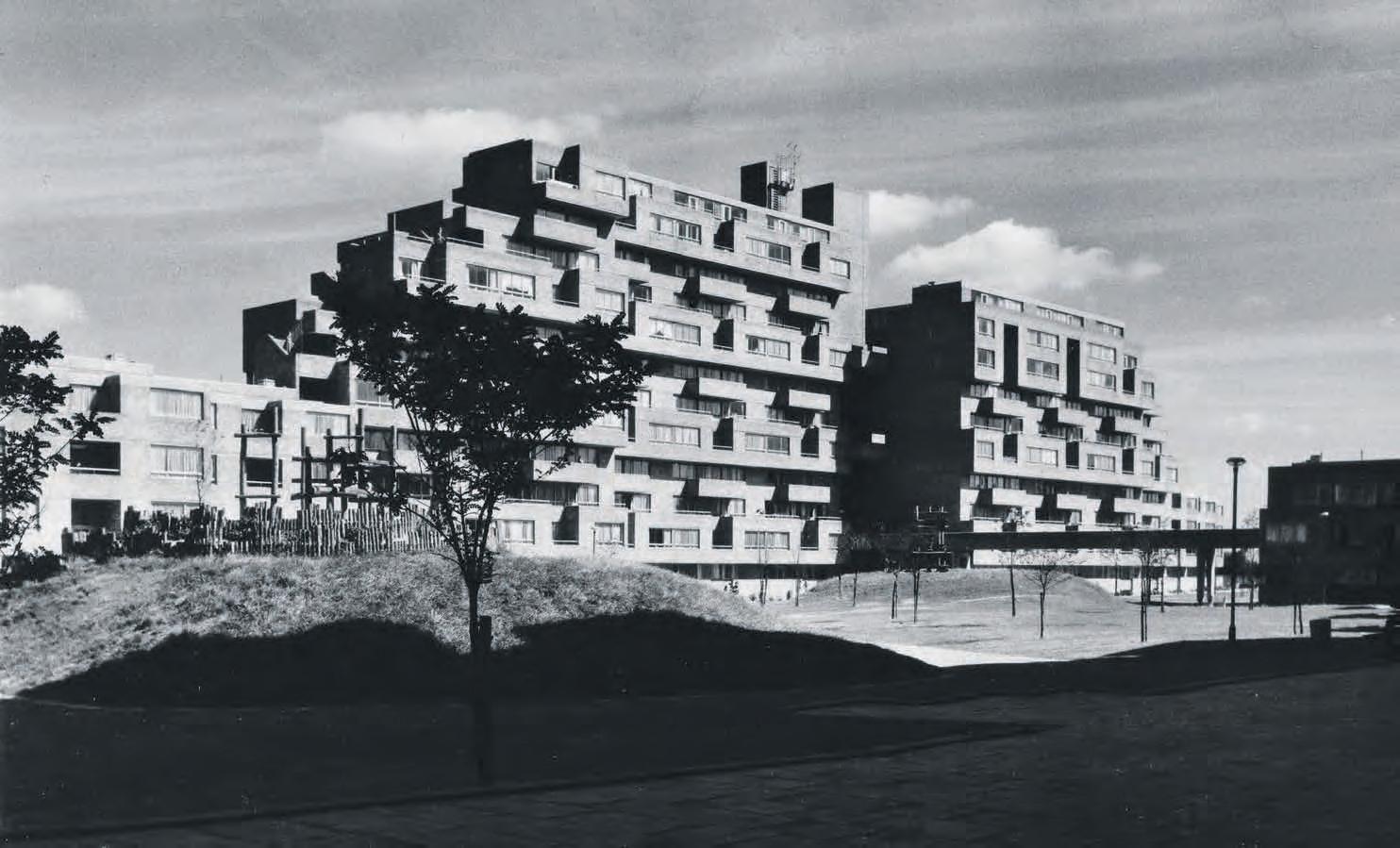
But I still had questions. I should explain that by this point I was several drafts into a novel about a house on Peckham Rye, set partly in 1843 when the house – as I imagined it – would have looked out on to the River Peck. Everything I’d learned told me the Peck would have been an open sewer in 1843; it would have become less lovely by the year as bathrooms were installed in those middle-class houses, and early Victorian drains, designed for stormwater, failed to cope. I had invented a character called Horatio who complained obsessively about the miasma from the river, and wanted it buried. But my research had hit an obstacle, and it was troubling me.
A quick Google search will tell you that the River Peck was enclosed in 1823. This date pops up everywhere, in newspaper archives and online, and it can be traced back to one source: Nicholas Barton, who says in The Lost Rivers of London (first published in 1962) that “the main part of [the Peck] was enclosed as part of the Earl Main Sewer in 1820-23, but the section nearest to the Old Kent Road remained open until 1831”. Barton doesn’t provide any sources or footnotes, or clarify which part of the Peck he considers the “main part”.
A deeper search suggests the people of Peckham lived alongside the River Peck for a few decades beyond the much-quoted date of 1823. The Dewhirst map shows the Peck running across Peckham Rye Common and northwards in 1842. There are paintings and Ordnance Survey maps that show a waterway crossing Peckham Rye Common until the early 1860s. And an intricate line drawing from the Illustrated London News (dated November 1861), titled Southern High Level Sewer at Peckham, shows workmen digging out a trench at a spot that could well be Peckham Rye. This is the engineering moment when Joseph Bazalgette’s sewers were constructed. It is also, I believe,
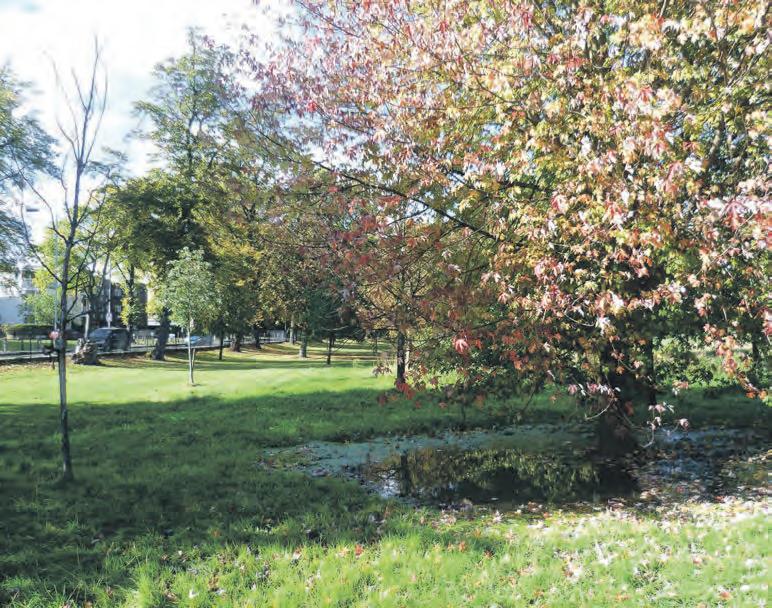
the moment in which the River Peck was lost to Peckham, channelled into a sewer that met the Thames via the Earl Pumping Station.
But I’m not a historian. What if I was wrong about the dates? My novel had sold and was being edited, and I was a bag of nerves.
Eventually I got in touch with Jon Newman, a local historian and author of several books on London’s lost rivers. He pointed me towards a set of minutes for the Metropolitan Board of Works from 1859, which record that local residents were petitioning for the Peck to be covered over because of its offensive smell. (The
board apparently refused their request, and provided deodorising agents.) It was validating, and slightly spooky, to see my imagined world reflected in this nugget of history. It seemed a version of Horatio may well have existed in Victorian Peckham.
A few years on, I’ve kept up my habit of a near-daily circuit of Peckham Rye Park and Common, and I’ve been watching with interest the work in progress by Southwark Council to prevent flooding. As locals know, the common is waterlogged after heavy rain, as stormwater rushes along the route of the lost River Peck.

Clockwise from top: Dawson’s Heights, East Dulwich; an article from the Illustrated London News, November 1861, which shows workmen building a sewer in Peckham; the northern tip of Peckham Rye Common, where the River Peck runs underground
Bazalgette’s sewer network can’t cope with the volume, it seems. The council’s website says: “Underground drainage and flow control devices will lower the rate of floodwater before it joins the existing sewer networks, improving sewer capacity.”
We may soon be able to walk across the common in winter without waders. It feels like the end of an era. More than 160 years after the River Peck was buried, it is lost but not forgotten.
The House on Rye Lane by Susan Allott (Borough Press) is out now in paperback




MON-FRI 8am to 4pm SAT-SUN 9am to 5pm
100 PECKHAM HIGH STREET INSTAGRAM @ COODIELONDON



JAMIE MOCKRIDGE TELLS US ABOUT HIS FERMENTED FOOD business, Jamie Ferments, which can be found in Peckham and beyond
It’s immediately clear from the animated enthusiasm in his voice that Jamie Mockridge is a man whose passion for food and flavours is – if you’ll pardon the pun – all consuming.
“I’m going to be cooking while we talk, as long as that’s OK with you,” Jamie tells me when I finally pin down the uber-busy but always amiable entrepreneur.
Jamie is a familiar face on the south-east London food scene as a result of his coownership of Arlo and Moe – whose Crofton Park and Hither Green cafes have proved such a hit over the past decade.
More recently, Jamie added the burgeoning and critically acclaimed fermented food business Jamie Ferments to his impressive culinary portfolio.
Jamie tells me how the business came about. “I’ve lived in south-east London for quite a few years,” he says. “My mum and dad actually came from Sydenham. They moved out in the 1970s and I’ve ended up back here [in south-east London]. I do my fermenting from the Hither Green Arlo and Moe cafe, so I’m running two businesses from there.”
Jamie trained as a baker in his teens before moving away from bakery and patisserie in his mid-20s because – as he says with a chuckle – it was “too many early mornings”.
After working abroad in various restaurants, Jamie left the food industry for 14 years, before returning a decade ago when he set up Arlo and Moe with his business partner, Jules O’Neill. His foray into fermenting came about by chance. “Around 2015 or 2016 I randomly met a guy in Deptford who talked to me about the health benefits of fermenting,” he says. “He wasn’t in the food industry or anything, he was just a 60-year-old guy I was chatting to in the gym.
“But he got me thinking, so I started doing a bit of research and got interested in the link between the gut microbiome and general wellbeing. So then I started making my own kimchi at home. It was something completely new to me. I hadn’t even heard of kimchi!”
Jamie says fermenting – particularly vegetable fermenting – is a gastronomic art that has traditionally been overlooked in the UK. “We ferment cheese and alcohol but not really vegetables,” he says. “But once I started fermenting kimchi for myself I definitely felt the health benefits from it.
“I now eat fermented foods on a daily basis and since I’ve done that my instances of having colds – for example – have definitely dropped.”
Jamie’s explanation of the physical and mental health benefits of fermented vegetables is as lucid as it is convincing.
“Essentially what happens is that when you ferment vegetables you start pre-digesting them
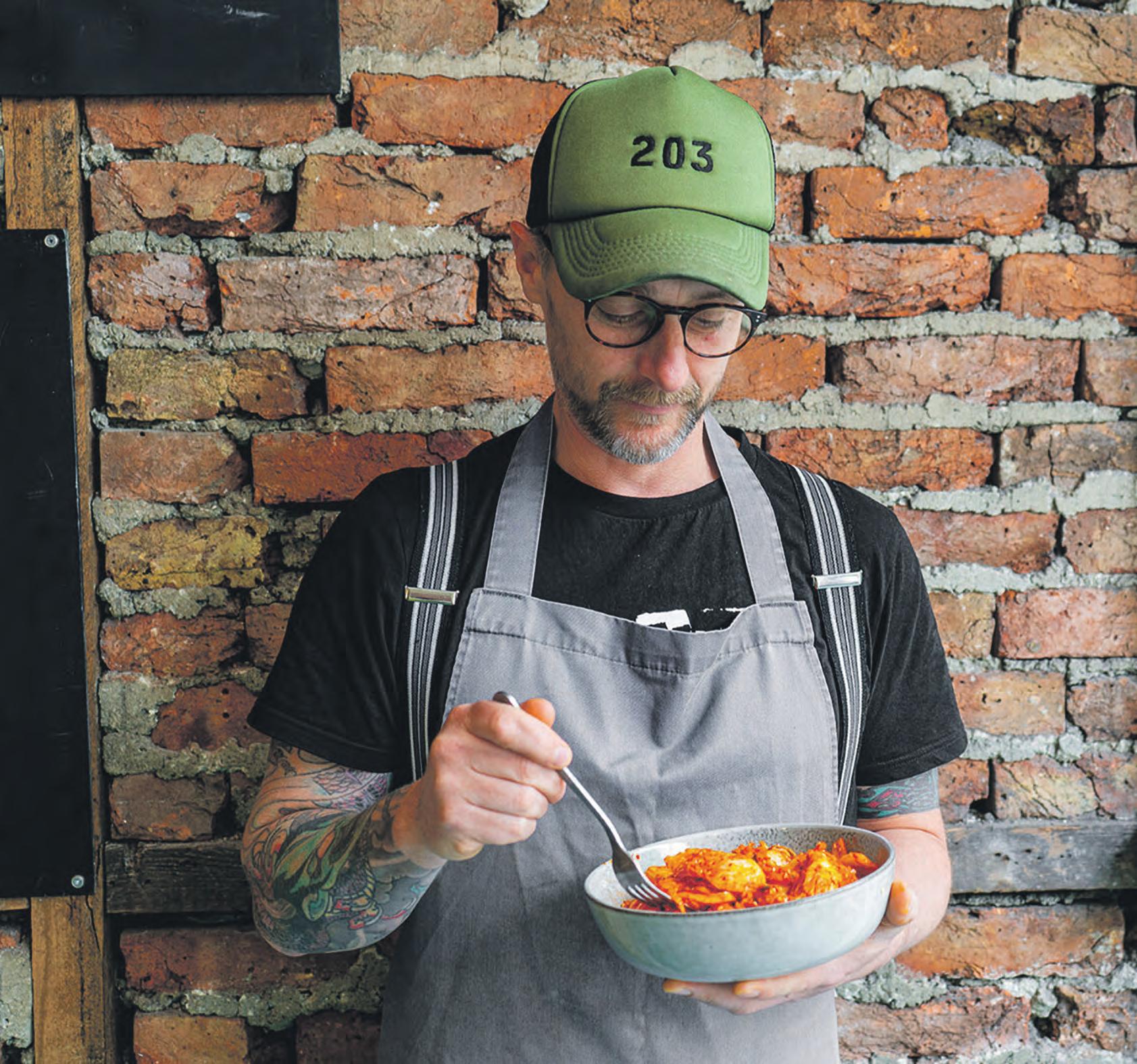

during the fermentation process. Therefore the carbohydrates start to get broken down, which is what the body struggles to do sometimes. The fermenting process also releases minerals and enzymes that you wouldn’t normally get.
“If you look at the countries with the highest life expectancy, they have a high proportion of their food being fermented – like Korea and Japan.”
Though he is an evangelist for the health benefits of fermented food, Jamie is quick to
stress that as far as his Jamie Ferments product line is concerned, taste is paramount.
“It’s important for me to say that even though I became interested in fermenting because of the health benefits, once I started eating kimchi and sauerkraut it was the flavour profiles that blew me away,” he says. “As a business I don’t go down the health route – I’m a food person, so for me it’s always about the flavour.”
Since it was established, Jamie Ferments has grown rapidly. “I was making kimchi for myself
and at work when, in late 2018, one of my staff members said to me: ‘Jamie, you should put this in a jar and sell it, it’s that good.’ So I thought I’d give it a go.
“Because I’ve been a local business for so long I know a lot of independent shops, and they all started stocking my stuff and it just grew from there. In July 2019 I expanded my range and I’ve now got two different kimchis – a classic kimchi and a vegan kimchi – as well as two different sauerkrauts, two pickles and a fermented hot pepper sauce.
“At any time if you come into my production area you’re going to see 400 to 600 kilos of vegetables either in the fermentation process or going into jars.”
As well as being available in a wide variety of local shops in and around south-east London –including Flock & Herd in Peckham, Gladwell’s in Camberwell, Jones of Brockley in East Dulwich and Proud Sow in Dulwich Village – Jamie can often be found at local markets, or you can buy his products through his website.
“Since I started going to the local markets it has been lovely,” he says. “So many people have come up to me and said: ‘Oh, you’re Jamie, we buy your stuff and we love it. We’re addicted to it!’
“The local reaction has been great. I think people like the idea that it’s a local product, but above all else it’s a quality product. I mean, if you look at my ingredients, there’s nothing added or artificial – I let nature do the work.”
TRY THIS FISH DISH FROM Ganapati, which has recently celebrated 20 years in Peckham
Serves 4
700-800g black bream or sea bass fillet
(cut fillets in half if you wish)
1 tsp fenugreek seeds
6 medium onions, quartered and sliced finely
1 thumb ginger, peeled and cut into thin strips (julienne)
1 green chilli, slit lengthways
½ tsp turmeric
1 tsp salt
2 tomatoes, quartered
4 tbsp coconut vinegar* or the juice of 1 lemon (or to taste)
1-2 sprigs of curry leaves
400ml coconut milk
Vegetable, rapeseed or sunflower oil
* thecoconutcompany.co supplies us with its classic organic coconut vinegar
USE THE WIDEST PAN that you have to fit the fish in one layer. Barely coat the bottom of the pan with the oil. Heat, and add the fenugreek seeds. As soon as they turn a shade darker, add the onion, ginger and chilli. Cook slowly until the onion is translucent. Do not brown.
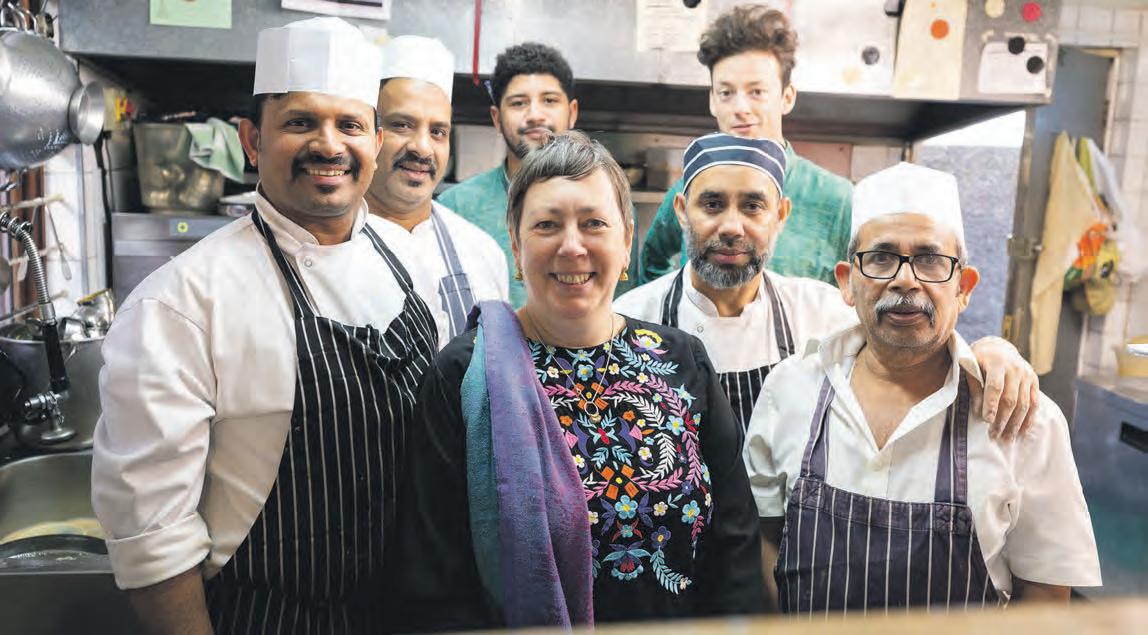
ADD THE TURMERIC and salt. Cook briefly. Then add half a litre of water and bring to the boil. Add the tomato pieces, the vinegar or lemon juice and the curry leaves.
PUT THE FISH FILLETS in skin-side down, cover and cook on a medium heat until half cooked. Add the coconut milk, swirl around, check the salt, cover and finish cooking.
YOU COULD USE salmon or any white fish that is not too strong in flavour or texture, as this is a delicately flavoured dish. Prawns or mussels, or a mix of seafood and fish would also work well in a mollee.

This recipe is an extract from Ganapati: 20 Years, 21 Recipes, a book to celebrate Ganapati’s 20th birthday. It costs £15 from the restaurant on Holly Grove or from the website
ALDHELM
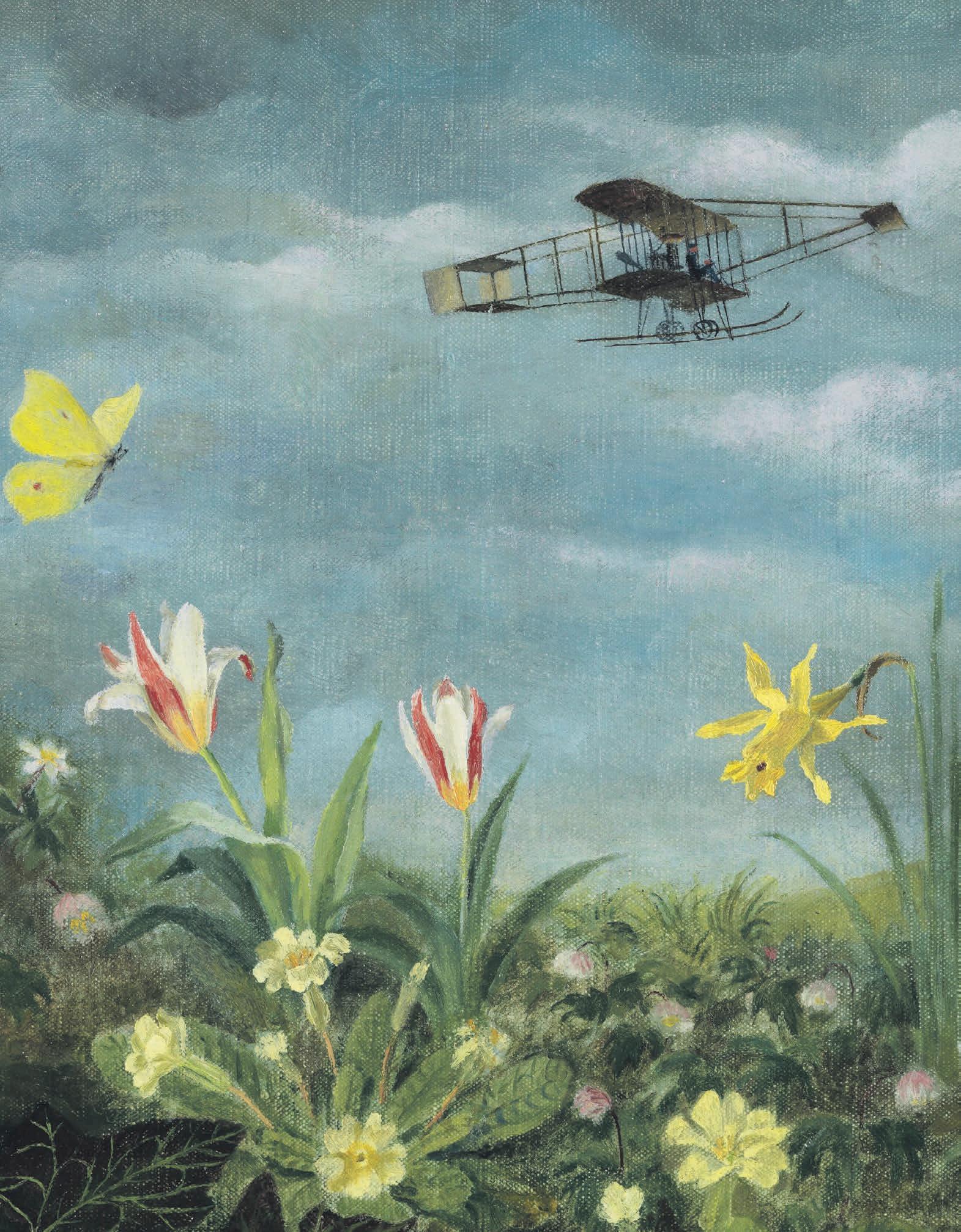



In a world where innovation and clarity matter, FSC delivers creativity that works. We build lean bespoke teams of global talent, crafting strategic campaigns, compelling content, and impactful customer experiences for brands. Focused, agile, and results-driven, we turn complexity into opportunity—delivering smarter creativity and better outcomes.